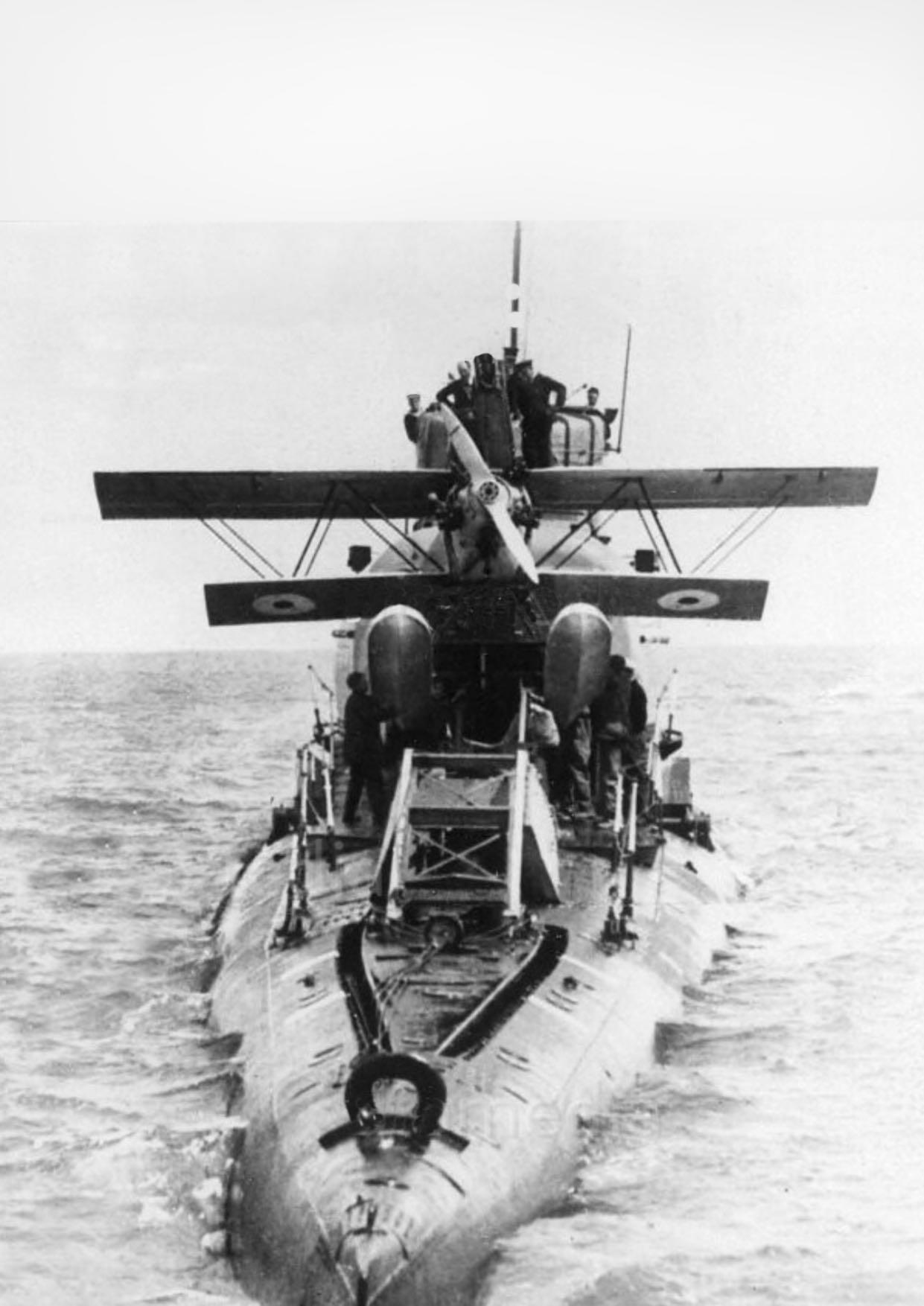






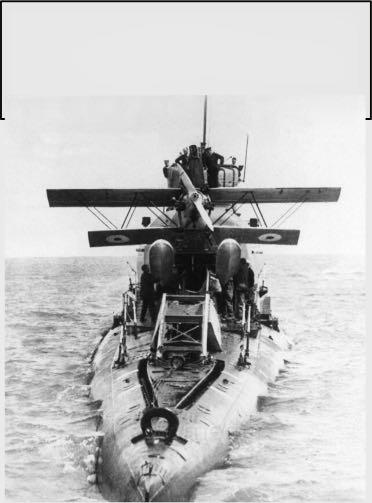
One of Britains ill-fated “M” class submarines about to launch its Parnall Peto seaplane. The vessel followed the “K” class design, which was also a disaster. (WikiCommons)
Slipstream is the Magazine of the Fleet Air Arm Association of Australia. The contents of this magazine do not necessary reflect the views of the Association or any of its agents.
PATRON
RADM Tony Dalton AM, CSM
NATIONAL PRESIDENT
RADM Mark Campbell AM, CSC
NATIONAL SECRETARY
Andrew Whittaker
ASSISTANT SECRETARY
Margaret Maher
Treasurer: James Caldwell
Webmaster: Marcus Peake
Database Mgr: Paul Norris
ACT
President: Bruce Tunnah
Secretary: GeorgeSydney
NEW SOUTH WALES
President: Phil Carey
Secretary: Dick Martin
QUEENSLAND
President: Stephen Huxtable
Secretary: Stephen Huxtable
SOUTH AUSTRALIA
President: John Siebert
Secretary: Roger “Whipping Boy” Harrison
TASMANIA
President: Michael Kus
Secretary: Grant Andrews
VICTORIA
President: Chris Fealy
Secretary: Malcolm Smith
WESTERN AUSTRALIA
President: Mike Keogh
Secretary: Mick Spahn
Emails can be sent here.






By Vice Admiral Mark Hammond AO RAN Chief of Navy
ir Victor Alfred Trumper ‘VAT’ Smith observed in the mid1930s that the Royal Australian Navy’s sea power would be greatly enhanced if it controlled its own air power capability. That goal was realised in 1947 with the establishment of the Fleet Air Arm, which has proudly served the Navy and the nation ever since. Reflective of his astuteness, Smith – who is known as the ‘Father of Australia’s Fleet Air Arm’ - later became Chief of Navy, and then Chief of the Defence Force (Chairman of the Chiefs of Staff Committee).
While a submariner would not normally be the first choice to provide a foreword for an aviation magazine, we have an acute awareness of the advantages naval aviation offers to a Navy’s fleet – particularly with respect to anti-submarine warfare. Throughout my 39 years of service, I have observed the unwavering professionalism and dedication of our Fleet Air Arm’s officers and sailors, past and present, from those who have operated our aircraft, sensors and systems, to those who have contributed their technical skills to keep us flying.
Since its establishment, the Fleet Air Arm has made an outstanding contribution to the security of our nation in peace, competition and conflict. It has also supported communities at home and abroad as part of humanitarian aid and disaster relief operations. Consequently, its veteran community rightly feels an enduring sense of loyalty, camaraderie and pride in their service.
The Fleet Air Arm Museum, along with its professional Association, provides a place for more than 700 members to maintain connection to their Navy aviation community and to reflect on the proud history of the organisation and its members. I encourage all current and ex-serving members of the Fleet Air Arm to get involved in their Association and build meaningful connections that will last a lifetime.
Slipstream is a fitting tribute to the many great stories that have contributed to the Fleet Air Arm’s 78 years of proud service to our nation. Congratulations on this edition and for the good judgement to feature a submarine (and an aircraft) on the font cover!






Slipstream was first published (first edition cover, right) in April of 1957 - a modest affair produced by the Air Department of HMAS Albatross with the blessing of the then Commanding Officer, Captain VAT Smith. This was 20 years before the FAA Association was formed, so the little magazine was available to anyone for the princely sum of 6d, which, according to Google, is the equivalent of about $7 today. This electronic version is exactly half of that price, 67 years later.
Since then Slipstream has waxed and wained according to the fortunes of the times and the skills of the Editors. Some were better than others!
In 2024 we hit a brick wall when the then editor resigned for reasons of ill health and we couldn’t find a replacement. A new model was devised on a pay-as-you-produce model, which eventually attracted a lady from Hawaii. She crafted the December 2024 edition but unfortunately could not continue for personal reasons.
So we now have a new, temporary Editor (me!) who will ‘hold the fort’ until a more permanent solution can be found. Hopefully someone out there will grasp the nettle and commit to the quarterly production in exchange for a generous handful of gold. With modern IT systems it isn’t hard, and the periodicity of the magazine gives plenty of time between sips to gather material and typeset it.
But that’s the subject of a separate advert in this edition, so, for the meantime, sit back and enjoy yet another iteration of this the Flagship of our Association. I hope you enjoy it.
Marcus Peake (Temporary) Editor.
✈











deceased now many years ago) plays a pivotal role. We see A4Gs, S2s & Sea Kings. We’re guessing the date of main content with 'Coxie' would be when the late Errol Kavanagh was CO VF805 with chequered tails on A4Gs in 1978/79. Click here to be entertained!
HMAS Melbourne - Australian aircraft carrier [Peter Cox LSO - 1978-9]. ✈




The golden girl of the few surviving S2s turned sixty years old in January of this year.
Built as N12-152333 she was one of the 16 replacement Trackers bought at the rush to replace those lost in the hangar fire of 1975 (see full story here). She served until August 1984 and subsequently avoided the fate of most S2s by being assigned to the Navy Historic Flight.
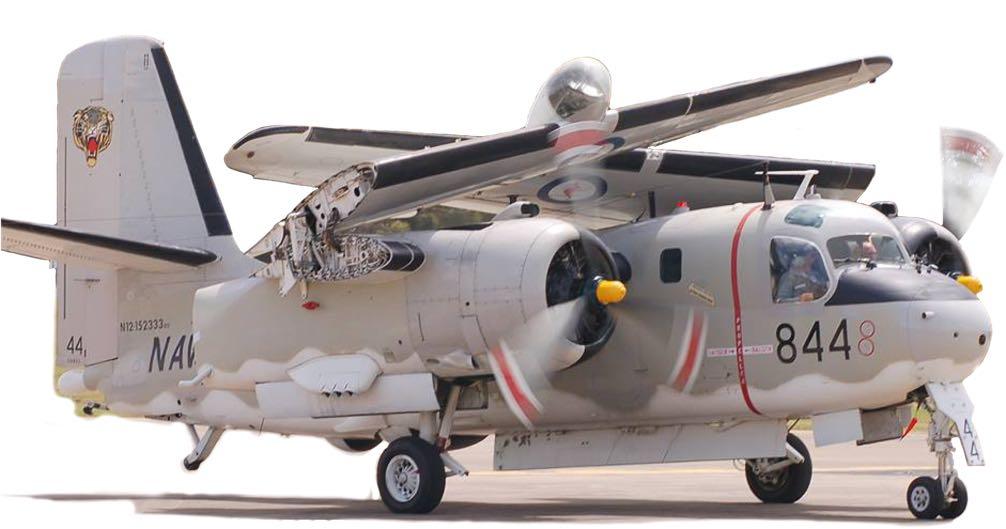
844 was subsequently purchased by HARS and refurbished to flying standard, as a pristine example of their work. You can see her at their Albion Park facility or, on occasion, gracing the skies around and about the Illawarra. ✈


On Wednesday, 01 July 1964, Caribou A4-134 was on final approach to Nowra when it crashed short of the runway threshold. Fortunately, the crew were not injured but the aircraft was written off.
The first of three DHC-4 Caribous ordered, A4134 was delivered to the RAAF from Toronto, Canada. Flight time to Australia was just under 97 hours, arriving at Richmond Air Base on 22 April 1964, where it joined 38 Squadron.
Runway 26 had a history of downdraft incidents. A 1991 report on shear wind at ADF airfields noted that of the 47 incidents recorded, 13 occurred at Nowra. This affected different aircraft types over time with the first reported on 01 July 1942 when a USAAF Martin Marauder B26 bomber dropped approximately 25 feet at the threshold of RW26 hitting the runway so hard the undercarriage collapsed.The aircrew escaped with minor injuries, but fire destroyed the aircraft. In the 1960s a RAAF Neptune pilot on normal approach to Nowra said the aircraft seemed to ‘drop out of the sky’ requiring a large amount of power to recover. Navy aircraft included Macchi and Tracker types, with the two most serious accidents involving Sea Venoms. In February 1960, a Sea Venom undershot hitting a 1.5metre-high roadway embankment just before the RW26 threshold wrecking the cockpit and causing the ejection seats to fire outside safe limits resulting in the death of the pilot and passenger. In December 1964, another Sea Venom undershot the runway again with fatal results for the pilot.
To fix the problem, large remedial earth works were undertaken to realign the road and build-up the approach to the runway, and no further accidents from this cause were recorded.
Kim Dunstan ✈
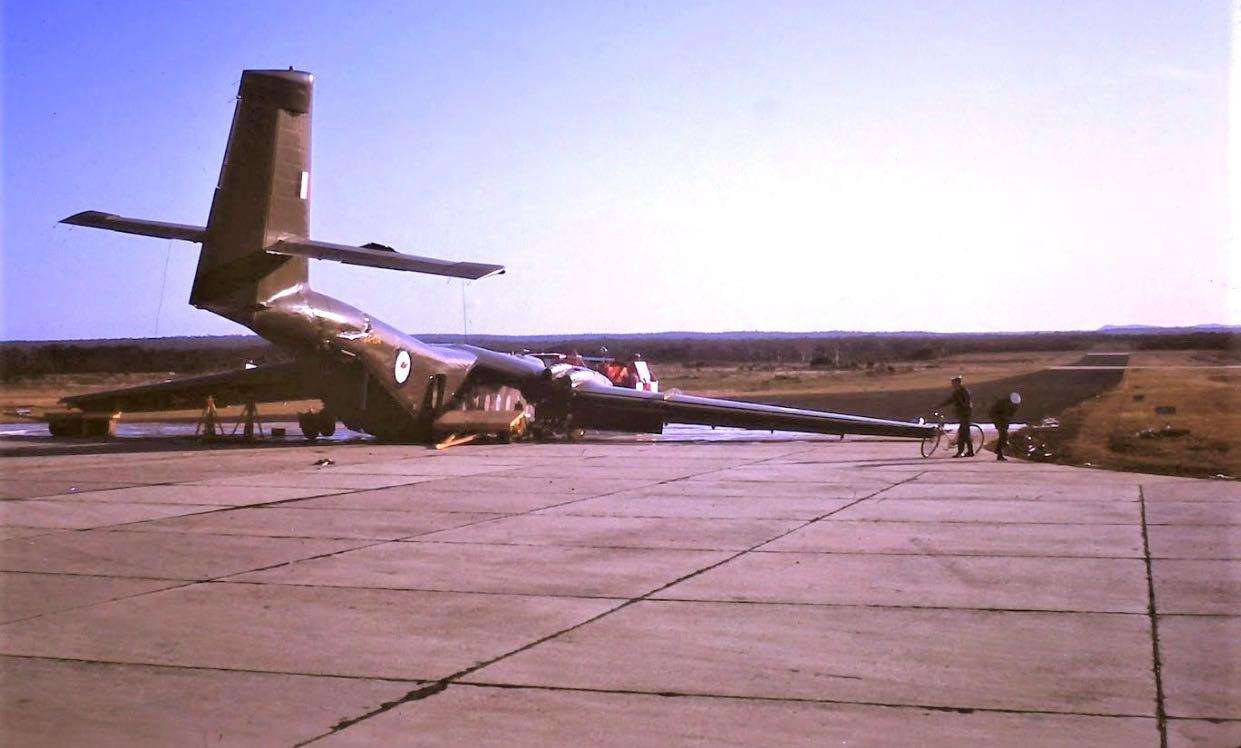
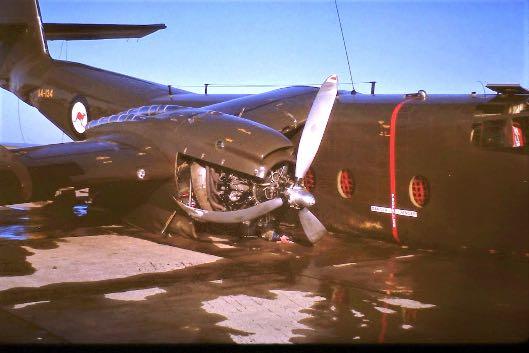
HAVE YOU PAID YOUR MEMBERSHIP SUBSCRIPTION?
At the time of going to press, only about one-third of our members have renewed their subscription for 2025.
Please help by paying now - details are on the back cover of this magazine.
If you are not sure if you are current, or you need help, please contact the Database Manager here.

from the Editor
Skyrise, a US-based aviation company, has envisaged a new cockpit design for its turbine powered R66 fly-by-wire helicopter which, if it catches on, may see traditional rotary-wing controls change forever.

In the modified helicopter a single flight control is positioned between the two seats and pilots can fly from either seat. This replaces the cyclic stick, collective lever and rudder pedals.
If you’re wondering how it works, you can see a short video here. ✈

updates given to the vessel over her life. But the story of Melbourne continued after that, with many proposals to retain the ship in a non-military role, the political arguments to save or dispose of the ‘flat-top’, her time in reserve, the farewells by aircraft and personnel, the final voyage to the scrapyard, and then, being retained for an extended period of 17-18 years in a Chinese port.
The author, Ross Gillett has addressed the numerous aspects of the ship and her crews and highlighted her failures, and the other problems that beset all major fleet units. Through 400 illustrations, the Flagship is depicted via both colour and monotone photographs, cartoons, artwork and technical drawings, excerpts from ‘Line Books’ and Reports of Proceedings, press clippings and official signals, even a record album, television show and movie, all of which describe the many phases of her lengthy career. You can preorder your copy here ✈



The long and distinguished history of the Royal Australian Navy’s aircraft carrier HMAS Melbourne is about to be published. This 202-page book from the Naval Historical Society of Australia will be in soft cover, A4 landscape format. It includes more than 400 photographs and other illustrations.
Expect to read stories of her deployments and missions, her aircraft and equipment, and the crews who operated this versatile naval asset. In depth, it describes the origin of the light fleet carrier, the changes made for her entry into RAN service, and the



from the Editor
I unexpectedly received a gift earlier in the year from John Perryman, the author of the truly excellent book “Kit Muster”. John rose to the rank of WO Signals Yeoman before accepting a commission to LEUT. He paid off in 2004 to take up a position at the Sea Power Centre.
His book, one of three he has penned, is a history of the RAN’s people: or, more specifically, what they have been wearing since colonial times. Its a story of the evolution of our Navy, which initially mirrored the RN but over the years evolved and matured to become what it is today.


Filled with many images, its 300+ pages are beautifully presented and are a treasure trove of detailed information about the men and women of the Navy, of categories, uniforms and the badges they wore. ✈
ArticleExpectan onthis soon!
On January 28, 2024, Airbus Defence announced that they signed an agreement with the Spanish shipbuilder Navantia to explore the integration of SIRTAP unmanned aerial system into the Spanish Navy's flagship Juan Carlos I landing helicopter dock (LHD).



The goal of this collaboration is to create a fully integrated system, enhancing compatibility between SIRTAP and the Juan Carlos I carrier. This will improve mission capabilities, operational flexibility, and the overall effectiveness of both platforms in a range of operational scenarios.
Developed as a high-end tactical UAS, SIRTAP will provide unrivalled performance superiority for surveillance thanks to its ability to simultaneously integrate two payloads, such as an electro-optical turret and a multi-mission radar.
SIRTAP will be able to operate in all weather conditions, thanks to an ice protection and high temperature amplitude system, enabling it to operate between -40⁰C and +50⁰C. With an endurance of more than 20 hours and an altitude of more than 20,000 feet, the tactical UAS is suitable for day/night and maritime Intelligence, Surveillance and Reconnaissance (ISR) missions, providing rapid response for close target inspection.✈


the Editor
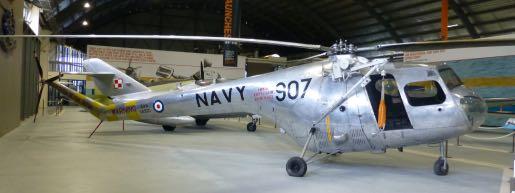

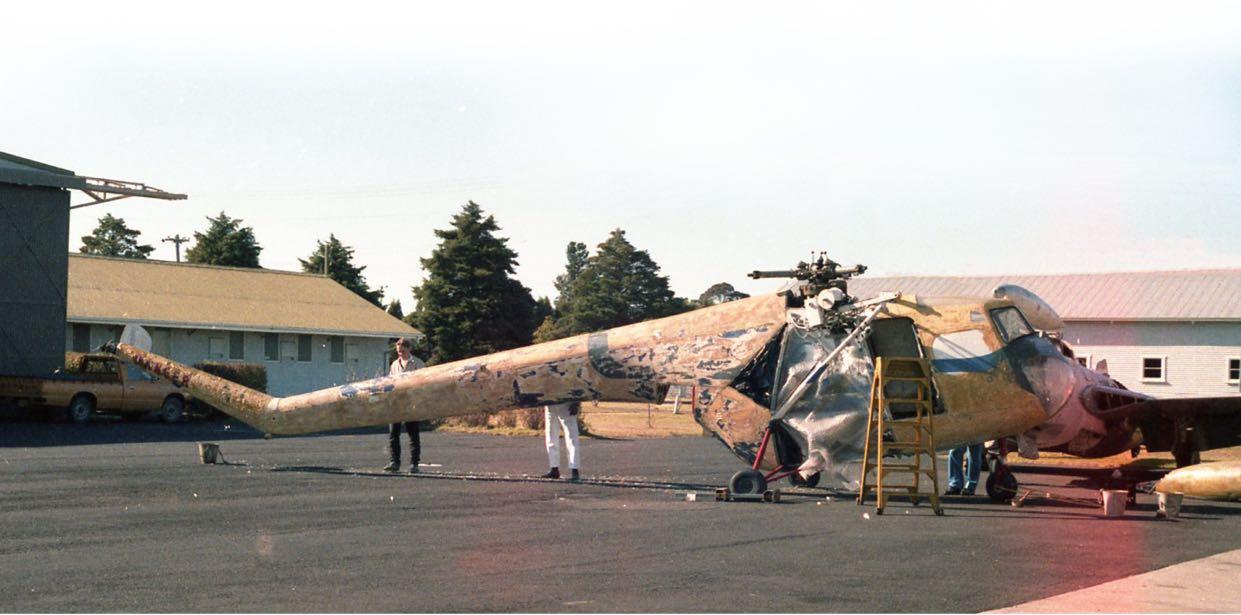

Every now and again I receive the excellent little magazine “Downwind’ produced by the Aviation Historical Society of Australia. January’s edition had this little snippet from Bob Livingstone, who said:
“Once a month, when I had a weekend off, I’d drive down from Sydney to Nowra and work at the FAA Museum and stay overnight Saturday. This was Sunday July 6, 1986 and a small group of us was stripping off the layers of paint of Bristol Sycamore 50 serial XA220/907 which was TOC by the RAN in December 1952. OH&S wasn’t much of a ‘thing’ back then, at least in the RAN: one of the helpers got some of the stripper in an eye and we (much) later discovered that the bulk stripper we used was carcinogenic and it was quickly WFU!”
Anyone remember those days, or have similar stories to tell? Contact the Editor here ✈
Are we watching a new chapter in aviation being forged before our eyes? Certainly, if Boom Supersonic has its way. The US company has recently ticked a major milestone with a successful supersonic flight of its 1/3 scale

demonstrator, the Boom XB-1. The flight, which is part of an extensive test schedule, reached a speed of Mach 1.12.
Boom’s plan is to sell its full size “Overture” supersonic airliner to commercial airlines, and reportedly has 76 ‘commitment’ orders on its books already. Overture is designed to carry between 64 and 80 passengers at up to Mach 2.2, comparable to Concorde which was retired in 2003. Boom is confident there could be a market of up to 1000 such aircraft with fares comparable to regular (subsonic) business-class flights The target for introduction of the first service is 2030, so its worth sticking around to see it happen!
Watch out for a future Slipstream article on the project. ✈

from the Editor
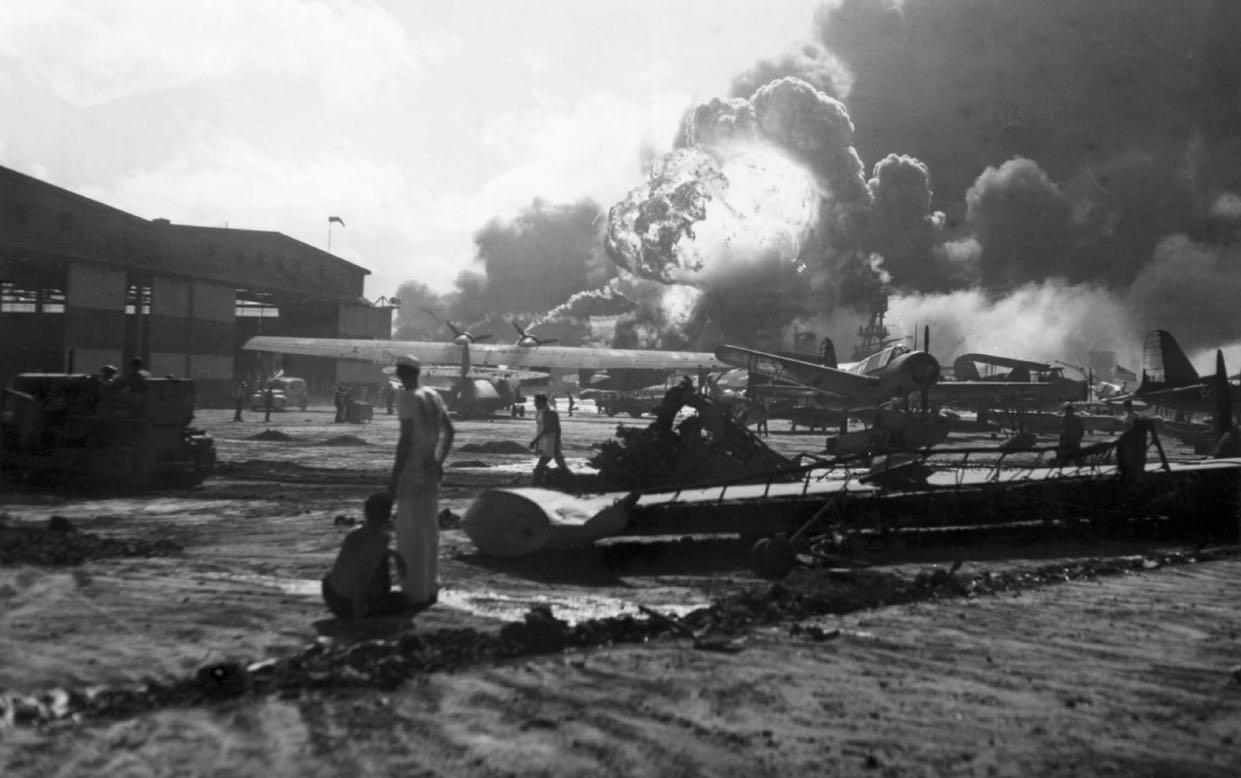
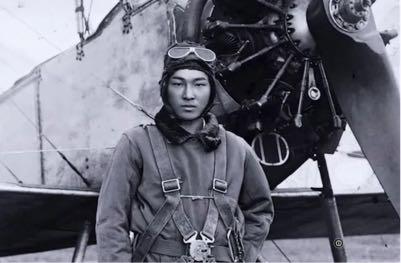
Masamitsu Yoshioka has died at the age of 106. He was a navigator/bombardier in the imperial Japanese Navy and was thought to be the last survivor of those who attacked Pearl Harbor in December 1941. He arrived over the harbour when the attack was well underway, and reported that all was ‘wrapped up in black smoke’. Nevertheless, his aircraft identified two ships and attacked one of them - the battleship USS Utah - which he struck with his torpedo. Utah sank at the cost of 58 lives. The attacking force had been instructed to ignore her as she was only a training ship.
After the war Yoshioka worked for a transport company and for the reformed Japanese Maritime SelfDefence Force. He didn’t speak of his wartime experiences until old age, as he was ashamed of being the only survivor and for living so long. (Telegraph Obituaries). ✈
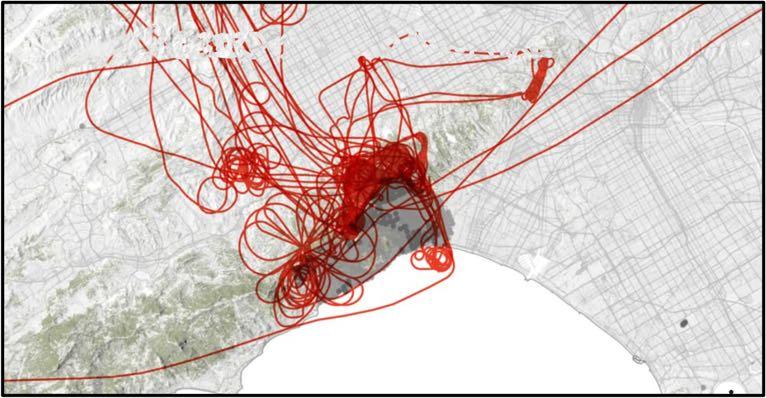


You can find various vids about ourA4s onYouTube and othersites,butthisoneisquite good. Itlastsforjustover10 minutesandtellsthestoryof howandwhyweboughtour classicfighter,andwhatwe

Do you know what this is? No, its not a ball of tangled yarn - rather, it is a plot of some of the tactical flights of firefighting aircraft over the Palisades fire in L.A. on January 9th. These were just two aircraft - both conducting spotting and tactical air control that requires them to stay over the AO for long periods, rather than water-droppers which make many small flights between a water source and the fire they are working on.
You can read an interesting article on the fire fighting efforts here ✈
Who said that the Chopper Pukes never lent a hand to help out their fixed wing mates? We have photographic evidence to prove it, as per this image of a Wessex lifting what was left of Skyhawk 878. Lt Sinclair jumped out of the A4 when the donk stopped downwind, back in April 1980. More details here. ✈


Boeing 707 to the Historic Aircraft Restoration Society (HARS) in 2017 and for the past seven years or so work has been ongoing to prepare it for a flight back to Oz, where it will be relocated at Albion Park.
Unfortunately the aircraft was found to have significant corrosion problems and with the cost of repairs spiralling, it has been assessed that ‘it would take many more years’ before the aircraft could be airworthy. Accordingly, HARS has decided to ship the iconic aircraft home, rather than flying it, with the aim to have it on the Tarmac at Albion Park Rail by March 2026. Watch this space for more news as it flies - or rather, ships, in. ✈
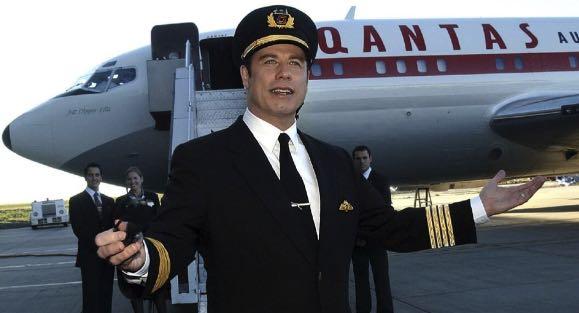



John Macartney is doing his magic again and the August reunion for all FAA veterans is shaping up to be a doozy (again!). August might seem a while away but with the speed that time travels, its really only just around the corner, so get your bookings in if you want to attend. More details, including a full itinerary, prices and payment form can be found here. ✈
Robinson Helicopters, who traditionally have manufactured small, light models such as the R22 and R44, is launching its all new R88. It’s a 10 place single turbine machine powered by an Arriel 2W turboshaft producing 1000 shp,. You can pick one up for around US$3.3 million next year, provided Trump doesn’t stuff up the market too much. ✈





In August two ex-Navy aviators will depart from the Shoalhaven on an epic 9,000 km flight to raise money for the Royal Flying Doctor Service. You can participate in this quest.
Together with former Navy/RAAF aviator Lyle Holt, I am participating in the Outback Air Race 2025 in our trusty steed and team namesake - VH-CAF.
Notwithstanding our combined service of over 74 years in Australia's Defence Force, this race will be well outside our comfort zone. Looking at the remote places the journey will take us we realise how important it is for everyone, no matter where they live, to have access to skilled and caring doctors and nurses to help them look after their health.
The significant challenge of the 3275 km Outback Air Racenot to mention getting from Nowra to the race start in Yulara and back again from Carnarvon (totalling 6950 kms) - will be made all the more worthwhile if as many of you as possible join us in spirit by donating, and following our progress as we go. Business sponsorship opportunities are also available.
It only takes a minute to donate and any money you can give (no matter how large or small) will go a long way to helping us reach our target. Please support Team 35 Charlie A. Foxtrot by making a donation through the QR code.
If a business promotion opportunity on CAF as it travels to the furthest corners of our nation is of interest, then please contact me directly on 0457 830 127.
Thank you, we really appreciate your support.
Vince Di Pietro. Team 35 - Charlie A. Foxtrot.


Use Red Button or QR code to support.






Adam ‘Curley’ Brydon, aged 18, enlisted in the Royal Australian Air Force on 4 September 1939, the second day of World War Two. By the age of 22 he was the youngest Squadron Leader in the RAAF, commanding No.78 (Kittyhawk) Squadron against Japanese forces in Papua New Guinea. Photographed standing by his P-40 Warhawk Curly was the epitome of a RAAF fighter pilot.
Prince Henry Duke of Gloucester, third son of King George V and Governor-General of Australia, held an Investiture in April 1946. Among the few double awards was a Distinguished Flying Cross and Bar to Curley for his ‘outstanding courage and coolness and intrepid leadership’.
Prince Henry was in his Army uniform but Curly was not wearing the expected RAAF Blue of a Squadron-Leader. Under the almost certainly approving eye of the Duke’s Official Secretary, RearAdmiral Leighton Bracegirdle CMG DSO RAN (rtd), Curley was wearing Navy Blue with the wavy stripes of a Lieutenant in the Air Branch of the Royal Australian Navy Volunteer Reserve - which he had been wearing since July 1945. This conversion of RAAF Blue to Navy Blue during the final months of World War Two is an almost forgotten story (see “The Two Dozen” FlyBy April 2023).
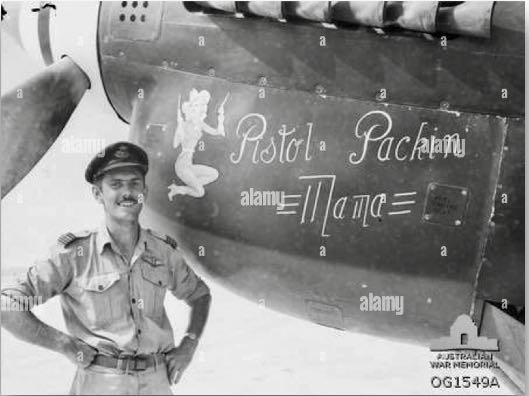
Top. Lt (A) Ian Loundon DFC RANVR was the first to land on Indomitable during deck qualification landings for ex RAAF volunteers in July 1945. Lt. Curly Brydon, pictured above, in his previous guise as a Sqn Ldr RAAF during the war, was part of the band of volunteers that became the spine of the new RAN Fleet Air Arm. (AWM).✈
On 1 April 1918 the Royal Air Force came into being when the Royal Naval Air Service amalgamated with the Royal Flying Corps. The initial RAF uniform was also an amalgam. On the army khaki jacket there were gold naval stripes for rank while the navy style cap, also in khaki, sported a gold embroidered badge. It was not popular and within a few months the khaki was swapped for serge in a shade called Russian Blue. This pale blue was not very serviceable and a further search saw a slightly darker shade, grey tinted, eventually adopted as RAF Blue.


When Wing Commander Richard Williams DSO formed the Australian Air Force three years later he chose a date one day earlier in the calendar, 31 March 1921, “to prevent nasty people referring to us as April Fools”. Granted the title ‘Royal’ five months later by King George V the RAAF needed a uniform. Williams, still wearing army uniform and in timeconsuming administrative battles with the Naval Board, briefly turned his formidable staff attention to wool serge. He wanted a distinctive blue that was dark but readily distinguishable from the almost black of the RAN’s Navy Blue. This proved elusive as the choices in Australia seemed confined to Navy Blue or the bright Royal Blue.
Richard Williams DSO formed the Australian Air Force he chose 31 March 1921 to ‘prevent nasty people referring to us as April Fools’.”

In the early years of Federation self-sufficiency in defence manufacturing was, as now, sought after. The Department of Defence built an explosive cordite factory in Maribyrnong, a small arms factory in Lithgow and a uniform factory in South Melbourne. A uniform factory needed a large cloth supplier. Geelong, with good rail connections to the prosperous wool growing areas of western Victoria, was chosen as the site for a woollen mill with its own power plant. On land donated by the Harbour Trust the construction cost £155,000. Touted as the most modern in the Empire, employing 250 workers, the Commonwealth Woollen Mills were opened by the Governor-General Sir Munro Ferguson in 1915.

Six years later, as the thirty year old First Air Member of the Air Board, Williams travelled to the Woollen Mills for a conducted tour by the Manager. There he saw serge being prepared for RAN uniforms. The wool, after being scoured and carded, was being dyed before spinning and weaving into cloth. Each batch was being dipped successively
RAAF Blue shade - ‘Navy Blue, less one dip’ as he wrote in his memoirs!
At its 1944 peak 182,000 Australians were wearing this shade of uniform cloth. Expanding exponentially during World War Two the RAAF had become the fourth largest air force in the world with 6200 aircraft and 61 squadrons.The traditional RAAF Blue is still being used today.
The early success of the RAN Fleet Air Arm owes much to the many ex-RAAF volunteers donning a uniform which had ‘One More Dip’. ✈
Top Left. An ‘official’ photo of Curly, who at 22 was the youngest Squadron Leader in the RAAF. Below. Like something out of medieval times, the Commonwealth Woollen Mills in North Geelong boasted little in the way of sophistication despite been touted as ‘the most modern in the Empire’. Here, a group of workers stand next to the dipping vats. The number of times the cloth was dipped determined its shade of blue. Navy uniforms required one more dip than those of the RAAF. (Image: National Wool Museum). ✈
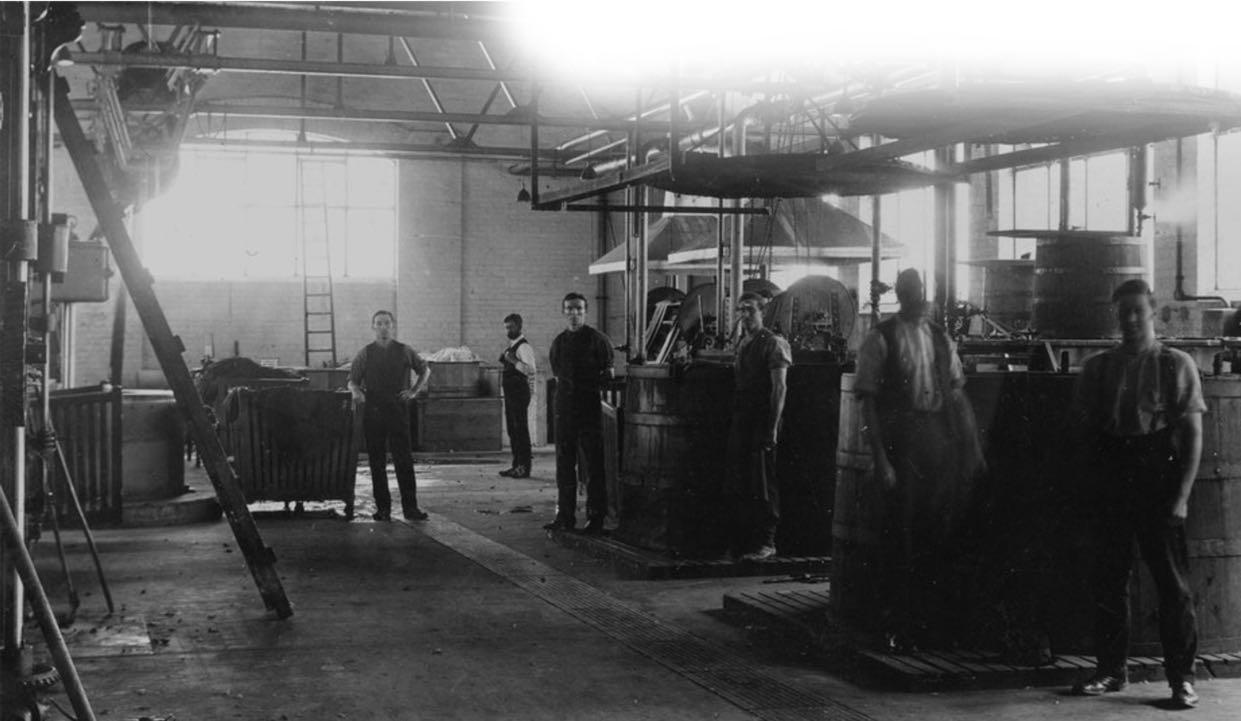

By Desmond Woods OAM
Despite serious expenditure on the RAAF's Joint Strike Fighters over the last decade, none of these highly capable aircraft are able to operate from the decks of the RAN's Landing Helicopter Docks (LHD) HMAS Canberra and HMAS Adelaide. These two Juan Carlos class 'harrier carriers' were designed by Navantia both as VSTOL platforms for air strike and air defence, as well as capable amphibious and command and control platforms. But the ADF cannot use them in the VSTOL role because the Australian Department of Defence asked for that capability to be eliminated from their design. The VSTOL ski jump remains on board only because it is necessary for ship stability. So, locked into that short-sighted decision, made in a different era, the ADF can use these excellent ships purely as amphibious and helicopter vessels and never as full spectrum naval warfare platforms.
So the current situation is that all the RAAF's F35s, and their highly trained aircrew, are waiting in hardened hangars on land bases waiting, presumably, to re fight the Battle for Australia in the skies over our shores! Not one of these F35s can rise from a naval deck and engage in ' ripple three' flying to ensure that the air space around our ships and people is free of enemy aircraft and their hypersonic missiles.
Someone has got this business of oceanic task force operations and convoy protection all wrong

- and it isn't the Japanese ! They know from bitter experience, that if you want airpower at sea you have to take it with you and, as the article informs us, the Japanese are buying more VSTOL F35Bs so that they can do just that. How very prudent of them.
Ignoring the problem and hoping for the bestfor decades
Meanwhile the Australian Government is planning to buy yet more conventional take-off and landing F35's for the RAAF to operate from its existing continental land bases far from where the action may be in the next few years. This plan, to ignore the requirement for protecting the air around our ships at sea, is based on the decades long assumption that we will always work together at sea and our 'great and powerful friend' will always provide USN / USMC combat air patrol (CAP) for us around any Australian task group or convoy escort operation in the South Pacific or the Indian Ocean, or at sea north of Lombok Strait in the SCS.
That assumption better still be correct, because if it isn't, and the RAN is operating beyond the USN air umbrella. our Task Force Commander hasno means, apart from a limited on-board stock of surface launched missiles, to sanitise local air space when our ships are out of range of RAAF F35s flying from Australia. Without a CAP, when

the shooting starts, our warships, and the bulk carriers and tankers they are convoying would become target practice for an uncontested opponent with carrier-based strike aircraft able to launch standoff anti-ship missiles without fear of interdiction.
This lamentable failure by successive Australian governments, over four decades, to maintain fixed wing strike aircraft flying from our ships decks at sea, is a bit George Bernard Shaw's opinion of many second marriages. He called them 'the triumph of optimism over hard won experience! ' We have surely learned this lesson about the indispensability of naval based air interdiction so many times during WWII and the second half of the twentieth century. Indigenous air cover at sea is not optional if our ships are to operate in harms way near to enemy airpowerand to survive.
What needs doing now to quickly improve the situation at sea?
Firstly - give Navantia a contract to upgrade Canberraand Adelaide as a priority project so that they can both operate RAAF and or RAN Fleet Air Arm F35Bs. The ships will also support those VSTOL aircraft belonging to our allies which drop in for a drink of fuel. Make them, at last, the fixed wing capable platforms they were always designed to be and are as operated by the Spanish Navy. .
Secondly - cancel the next tranche of conventional RAAF F35s and invest that same money in F35Bs.
Thirdly - invite the RAAF to the party and ask them to get on with learning to fly their new F35Bs from Navy decks - like the RAF and the RN Fleet Air Arm have been doing together since the April to June 1982 Falklands War. Those RAN Fleet Air Arm pilots selected for conversion can also add to the numbers of F35B pilots, easing the pressure to the RAAF to crew all the new aircraft.
That was when it became obvious to the RAF that unless they could fly from the sea, not just over it, they hadnothing lethal to bring to the fight. Once Adelaide andCanberra are F35B capable they might be able to host some US Marine Corps JSFs or Japanese ones. That really would provide visible interoperability at sea. The RN hosts the USMC regularly on the two Queen Elizabeth class carriers and the Japanese are preparing to do so.
It really is 'punching well below our weight' nationally to persist with not acquiring this essential F35B capability. Is it reasonable to be
buying our new frigates, which we know cannot survive in potentially enemy occupied air space? During high end warfare we will need our ships to be at sea, far from land based air cover, keeping sea lanes open for cargoes to pass across. That capability gap in the air currently makes our Navy less of a deterrent than it could, and should, be, because our fleet's vulnerability to air launched long range missiles makes it realistically a coastal force only without the USN to protect it. Convoying maritime trade might be deemed by our government too risky in wartime for the RAN to operate without any long range VSTOL aircraft able to take down the enemy's aircraft while they are still out of missile range.
Lessons learned ?
The Japanese Navy's WWII command team learned the hard way, eighty years ago, that once carrier-based air cover is no longer available the war is over and defeat is inevitable. Their professional descendants are not relying on the USN to pick up the tab for protecting their fleet and merchant marine. They are doing what they can now to be ready in case they are tested in the North Pacific far from their home air bases by 'things sent to try them.'
Australia should also do what we can now to prepare for the same air defence test in the South Pacific and Indian Oceans, and the highly contested waters to our north, where we will need our ships to be. We should realise that we might have to 'go it alone', particularly if our powerful friend has too many other simultaneous calls on their decks and aircraft to help us to operate successfully purely in our national interest at sea. Protecting ships coming to our ports with fuel to keep our economy from falling off a cliff is our business and may not be seen as the core business of the USN by the occupants of the White House or the Pentagon.
In this new, and clearly transactional era in geopolitics, we need some fresh thinking and to drop the comfortable assumptions about who will be with up for the fight when we need to keep supplies flowing to our continent across the vast oceans that surround us. There is now an urgent requirement for the ADF to havemuch greater full spectrum independent capability at sea.
That would be one obvious conclusion we could be drawing from the unprecedented events of this month in Washington where all the old certainties about who will be sailing beside us through hostile seas just became far less predictable.
Desmond Woods OAM. ✈



By George Sydney

Write something; or else. We need to keep Slipstream alive and we might actually get a new editor. You never know. So, what to write about? Something to do with naval aviation might be good: a minor history article, a nostalgia piece, an amusing anecdote? No. I’ll write
King Charles and Queen Camilla visited Canberra on Monday 21 October 2024. In the morning, they came to the Australian War Memorial to lay a wreath at the tomb of the unknown soldier. My wife and I, both retired, were looking after our grand-daughter that day and, as we live close by, we

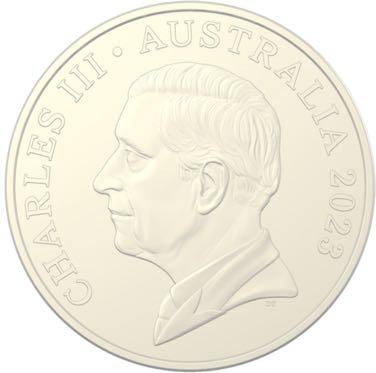
took her along to see the King. It was sunny and warm. A colourful crowd gathered in high spirits to see the Royal Couple and to capture their images. ‘Not a bad turn out for a working day’, I thought. I supposed a few might have been enjoying ‘working from home’.
We were not early, but had a bit of waiting to do before the line of limos and their security escorts arrived. And so my mind began to wander; as much as it could when supervising a two year old with puppies, excited school kids and minor precipices all around.
My thoughts turned to memories of the King. I had never met him. Never. My only impressions had come from television shows. I remember that, as a boy, watching his Investiture as Prince of Wales and I also remember watching him taking his first solo flight during a helicopter conversion course. He was flying a Wessex from 707 Squadron. He then went on to fly with 845 Squadron. The King was once a ‘Junglie’, even earning his green beret. That took me back. There have been quite a few RAN pilots over the years who have

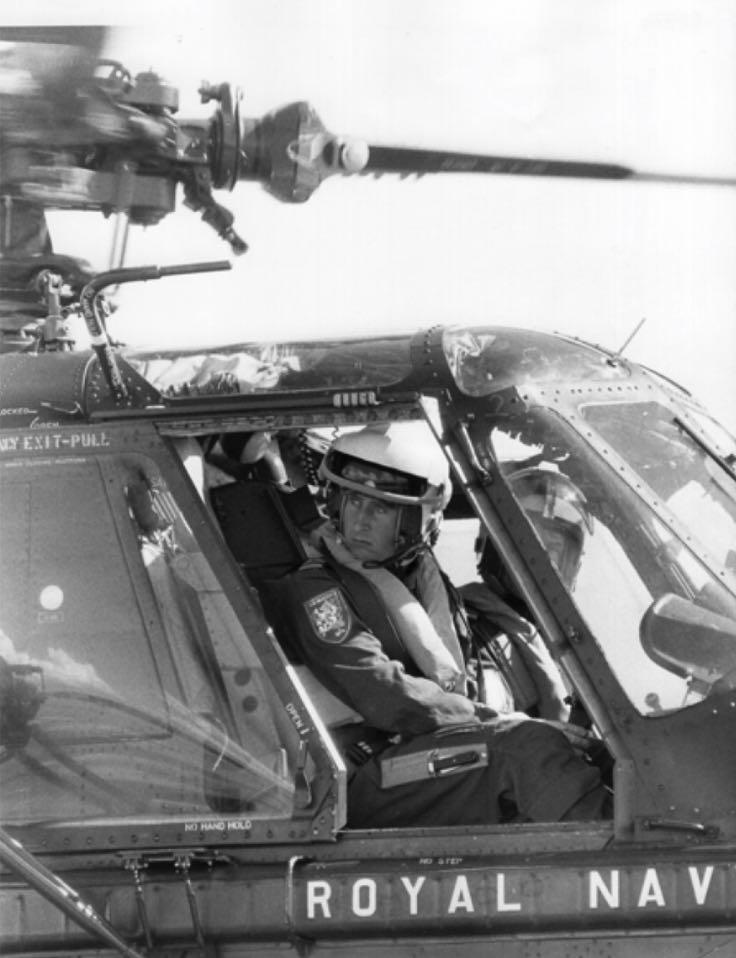
served on exchange with the RN, flying with the Commando Squadrons in support of the Royal Marines. Ron Lawrence may have been the first, in the early 1980s. As far as I know, he flew the Wessex V and was there when the Falklands war erupted. He didn’t get to go. Politics or some other reason. Peter (Bong) Nelson is probably the most renowned. He was on exchange when the first Gulf War broke out. He did get to go and was awarded an Air Force Cross after evacuating some wounded under fire in a sand storm (probably filing his tax return at the same time).
My own exchange was much less dramatic, but eventful enough. I was posted in 1987 from 816 Squadron (Success Flight) to Yeovilton where I would undertake conversion onto the Sea King HC4 with 707 Squadron before joining 845. A coup in the South Pacific interfered somewhat with my preparations for departure. Nevertheless, I still managed to turn up a week early, according to the mess manager who turned me away, telling me I had to find somewhere else to stay for now.
I hadn’t flown Sea Kings before
and these were almost new. It seems that I was fated to potter around the remainder bin of RAN helicopter types, so this was welcome. The Junglies had enough Sea Kings and staff for a dedicated training Squadron, so my conversion and operational flying training ran to a tight schedule. That said, this was about flying the basic aircraft – no simulator trips and none of the automatic transition work associated with ‘pinging’. The aircraft rear cabin was empty except for the standard ‘rag and tube’ seating with lap belts. But it had a comfortable, well- appointed cockpit; a strong winch and cargo hook; plenty of cabin space, plenty of fuel and an extra engine. Who could ask for more? The Sea King HC4 was usually operated by two pilots and a crewman. But it could be, and was, operated by a single pilot with the crewman standing by to manually control the throttles if needed.
I thought the aircraft quite handsome, as far as helicopters can be, in its dark olive-green livery. Far more capable and a lot tidier than a Wessex, though less lively. But perhaps being a lot more sensible somehow made it a little bit, I don’t know… dull, lacking in character? That wasn’t how I felt when flying over the sea or rough terrain, operating from a ship at night or when the weather was bad. Then, it seemed a wellengineered, trustworthy, and reassuring vehicle to be in. I had finally caught up with the 1970s. We could have done with one of these, or even a Wessex V, on Success.
I moved on to 845 Squadron

after a few months. I think it’s fair to say that I may not have been quite what everyone was expecting. It might have been the short stature, but it was probably the Scottish accent that threw them. It can do that. Anyway, I settled in quickly and to show what those in charge of 845 thought of the arrangement, I was soon on my way back to Australia: flying to Hong Kong by chartered Tristar and then embarking in HMS Ark Royal no less, bound for Sydney and the bi centennial naval review on Australia Day 1988. The ship had embarked a flight of two SK4s from our Squadron for
logistic support (in COD we trust!) And that’s what we did, mostly. Years before, I’d had a couple of very short stints attached to Melbourne’s SAR flight and these operations were much like that. You’d start with a plan, but more often than not there were “a hundred visions and revisions before the taking of toast and tea’.
At some time, when we were near Sydney, I was tasked to fly into Nowra to deliver or pick up something. Perhaps both. I can’t remember the details. Anyway, I felt like a cat must when taking a mouse inside to show its owner. But it was a week-end and when I shut
down at the ‘A’ hanger hardstand there were only a few ground crew present, none of whom I recognised. I suspect they didn’t realise I was a member of the RAN as we made the necessary transactions. Perhaps it was the pommy flying suit, maybe the accent. Still, it was good to see Albatross and the Shoalhaven again, even if it was just a quick ghostly visit.
Like many who joined the Fleet Air Arm in the late 70s, I’d heard too often what a marvellous time was had by all those embarked in HMAS Melbourne during the 1977 Spithead naval review in the


❛❛
The ranks at the fence grew three or four deep and a forest of phones were raised.”

UK. I doubt that it could have been any more splendid or enjoyable than what took place on Sydney Harbour in 1988. There may have been better Fleet Reviews, but I can’t say and would have to be convinced. This was certainly the biggest event I’d been part of and now I could see why those who went in 1977 talked about it enthusiastically for so long.
The Duke and Duchess of York conducted the review of the Fleet from HMAS Cook Perhaps, given more recent developments, I shouldn’t mention it. But the Duke was known then for being a naval helicopter pilot (Lynx) and Falklands war veteran.
Regardless of that, the Duchess of York was probably the first Royal family member I actually saw with my own eyes. At least I think it was her: shaped like a woman, wearing a dress, had red hair and was
on the right boat. I wouldn’t see another Royal until 2014 when Prince William (the current Prince of Wales), qualified Sea King pilot and Princess Catherine attended the ANZAC Day ceremony at the Australian War Memorial. I had a closer, but very brief, look at them during the march past.
But I have digressed. The King was on his way, the crowd was murmuring and moving about. The cavalcade drove up to the front entrance of the war memorial. The ranks at the fence grew three or four deep and a forest of phones were raised. I was standing a little way back, which given my stature may not have been especially smart, but I’m sure I caught a glimpse of the King and Queen as they briskly walked up the entrance stairs. I also got to see the top of their heads when they emerged and made their way down to
another ceremony in the surrounding garden some way from where I stood. I did at least get a distant view of them then– a bit like 1988 and 2014. Blessed are the cheesemakers right enough.
We started to leave with our granddaughter in her stroller waving a small Australian flag that she had picked up from somewhere. We were standing waiting to cross the road when the King’s car drove past. The window was down and I saw the side of his face. I raised my hand to wave just as he turned his head to speak with the Queen, but I will remember that image whenever I look at a newly minted coin.
Going home, I reflected further on my time as a ‘Junglie’. Plenty of other memories came back, but I won’t dwell on those here. Suffice it to say, that it changed the trajectory of my life fundamentally; and for the


better. A few months before the end of my posting, when deployed to West Germany and waiting in line at a Barbeque, cupid swooped like a nesting magpie. I met the woman who would become my wife and who now walked homeward with me down ANZAC parade.
I also reflected on the flingwing Windsors. I wonder if Prince George, Princess Charlotte, and Prince Louis will take up rotary wing aviation like their grandfather, father and, dare I say, uncle. I can’t see any of them wanting to become Royal drone operators. But you never know. What is certain is that, for now at least, a Junglie Reigns and that is OK with me.
There. Done. Probably not quite what the editor was expecting. Perhaps a bit too long. Perhaps I should have accentuated other things. Anyway, lets submit it and see what happens.
George Sydney. ACT Div. ✈

❛❛ I can’t see any of them wanting to become Royal Drone Operators.”

Slipstream is our flagship publication and we are looking for someone with the right skills to produce it. There’s good money to be earned as well as a deal of satisfaction to be had in creating it.
Here’s the deal:




• You commit to produce one edition as a trial. If both parties are happy, then more editions can be done.

• Final product to be delivered to the webmaster in high quality PDF format in the timeframe required (Slipstream is quarterly).
• We will distribute it through our website and email system, so you don’t need to be involved in printing or distributing.
• We will provide you with advice to help get you started.
• We will pay up to A$2,500.00 for each finished edition, depending on the skill of the producer.
• You don’t need to be an FAAAA member, so family and friends are eligible. Spread the word now!


For full details and conditions, contact the webmaster here.

On behalf of the SA Division, we extend our congratulations to the Slipstream Editor, Carolyn (Caz) Sands for a brilliant first edition of the December ’24 Slipstream electronicus magnifico. Not holding it in my hands (talking Hard Copy) takes some adjustment and I feel that I am slowly warming to this ‘Work of the Devil’ electronic concept.
by Roger Harrison
and we now have to find ourselves another meeting location. Well, the admin of the Division did some research, and we have decided on your behalf, to lock in The Maid of Auckland Hotel who will allow us to hold Meetings in a private room set aside for this occasion. The price being to enjoy a meal from their menu before the Meeting.

Sadly, Caz has informed the Team that family commitments will stop her editing future Slipstreams, so it is back to the drawing board and the default Editor in the shape of Marcus Peake and his sharp wit. Caz and family are relocating back to Trump territory and without a hand gun. I fear for the girl.
Thank you Marcus for picking up the Editor’s position until a new one can be found.
Happy New Year to you all.
The SA Divisional December Christmas lunch at The Windsor Hotel (15th Dec) was a success with just under 20 Members braving the extreme heat to travel north to the Windsor. The staff and manager Nick takes great care that we are comfortable, and besides, the Members and partners are great company anyway.
Always feel guilty returning to the Hotel after years of having our General Meetings there then relocating to the Keswick Military Barracks for meetings and lunch. Now of course the State Government have sold off the property for a quick buck

a Members home. Either way, the Park is a great idea for a community lunch gathering of like-minded people whose company I enjoy. The GM was held over until the March Meeting.
Membership Renewal is now overdue, and Felonius is on Speed Dial number 1.
Our January ‘Picnic in the Park’ General Meeting (19th Jan.) held in the delightful Wittunga Botanic Gardens at Blackwood, has been cancelled due to extreme weather mainly 36 degrees. We will have to rethink this meeting location for January and default to a pub or
March the 19th 2025 is the Divisions AGM where the Members can alter the structure of the Executive Committee for Members of their liking at the
Some members of SA Division having a good time (?) over lunch. (Photo Roger Harrison).✈




risk of me sending our debt collector, Felonius, around for a visit to their home at 0300H to have a meaningful discussion on their decision for change. So, with that in mind, the Executive normally remains unchanged with John Siebert as the Boss, Gerry Dowling Vice President, Ian McBeath as Treasurer and Roger Harrison as Secretary. I have yet to confirm to the Committee, that I may be in England visiting a daughter in March and a part of April. This will be a surprise to them. Home before ANZAC Day. Hoping Ian Laidler can take Minutes at the AGM or at least his lovely wife Dee. All in all, not the best time to leave the country but when family are paying the airfare, I go.
ANZAC Day here in SA will possibly see one of our longterm Members lay a wreath at the Dawn Service in Adelaide. This Member is no other that our Most Senior Member, Henry Young. As he approaches 102 years of reckless living, he is Young at heart as well as of name. His minder Gerry fends off all unwanted attention as Henry visits the night clubs and pubs of seedy North Terrace.
Possibly will not ask him to be “Right hand Marker” for the march pass as his pace last year was slower than the other Members marching, and he opened the gap between us in the front holding banners and flags not to mention the President shouting ‘Eyes right’ which no one could hear. So, Henry will be absorbed into the ranks. ‘Locko’ Lockwood will be placed on standby instead.
South Australian Members will get a ‘Flash Message’ emailed to your letterbox mid-April if the Secretary survives the flight back home. This will contain all the details covering ANZAC Day Ceremony and Parade meet up point which often changes on the day due to a whim of the RSLANZAC Day Committee, like last year. ANZAC Lunch will be held at The Maid of Auckland Hotel.
Another General Meeting in May (21st) at The Maid of Auckland and perhaps we revisit the cancelled Wittunga Botanic Gardens Picnic meeting if the weather is stable and not that extreme rubbish shipped over from the WA Division. For the SA Division, wait for the usual ‘Flash Message’ sent to your door. Reminder, that the major benefit of a picnic in the Park, is that all dogs and Stokers are prohibited.
Members round up:
• Paul Shiels has moved to Victoria to be closer to his family. He remains on the SA Division books at his own volition and not influenced by an early morning visit by Felonius.
• David Smillie is still having further treatment to his jaw surgery and is looking much better for it. His partner Jude said that he still has to restrict his diet to liquids. Wish Jude would restrict my diet to liquids.
• Henry Young is remaining active with his 102 years of healthy living. The police have suggested
that Henry hand back his licence as diving on the footpath to keep off the busy roads isn’t recommended. Safer for Henry of course, but Gerry will do the driving.
• Trevor Grant will be away throughout the year visiting his enterprise in Japan. He has a tourist venture there and from photos seen, cherry blossom and volcanoes are everywhere.
• Barry Lord still living in Queensland through choice I believe, and Peter Coulson is totally 180° opposite at the other end of the ‘Tyranny of Distance’ scale.
• Vic Byers is still making appearances at Meetings dragging his dodgy leg along for the ride. This is a man of strength and character, and we have several of those Members amongst us. Not all heroes wear capes or wear their underwear on the outside of their clothes.
Roger Harrison.
SA Whipping Boy.✈



The Canberra Services Club is our normal venue, for those who can make it, for a few quiet drinks which we typically hold between 4:00 and 6:00 pm on a (selected) Friday afternoon. We have had one catchup here since Christmas with work underway on our Social Agenda for the remainder of the year.
by Bruce Tunnah



Once again we gave members the opportunity to (voluntarily) donate an additional amount of their own choosing on top of our annual membership fee. This time round $695.00 was raised which will be forwarded to HARS to assist, in a small way we know, to support our Navy Aircraft in their collection.
Work on the Australian War Memorial here in Canberra is progressing well with the new forecourt (to be officially opened at the end of March) now open to the public. Completion of the works, which is substantial, is not scheduled until 2028. The works are amazing as the photos I have provided here will attest.
The key features so far are a ‘Rising Sun’ copper roof taking shape on the new ANZAC Hall behind the AWM Proper; and a new subterranean entrance for visitors
(below the existing forecourt); with access via a set of stairs supplemented with external and interior lifts. Visitors can also access the external lift from inside the covered carpark situated behind Poppy’s Cafe. I understand that the existing front entrance currently also remains open,
Kudos to Geoff Ledger as the Division’s newly elected Welfare Officer who, with the support of George Sydney, have been
ensuring that the needs of members with specific requirements are being addressed. This includes visits, guidance where applicable, and for a number of our older members without electronic access - provision of a (locally) printed hard copy of Slipstream.
I continue to rely heavily on our Secretary / Treasure (George Sydney) for his continual work ‘behind the scenes’ with our membership sitting at around 65 and, finally, on behalf of myself and our Committee; I trust our other Divisions are fairing well.
Yours Aye, Bruce Tunnah OAM President, ACT Division. ✈
The ‘Copper Rising Sun’roof of the new ANZAC Hall in progress (source AWM)




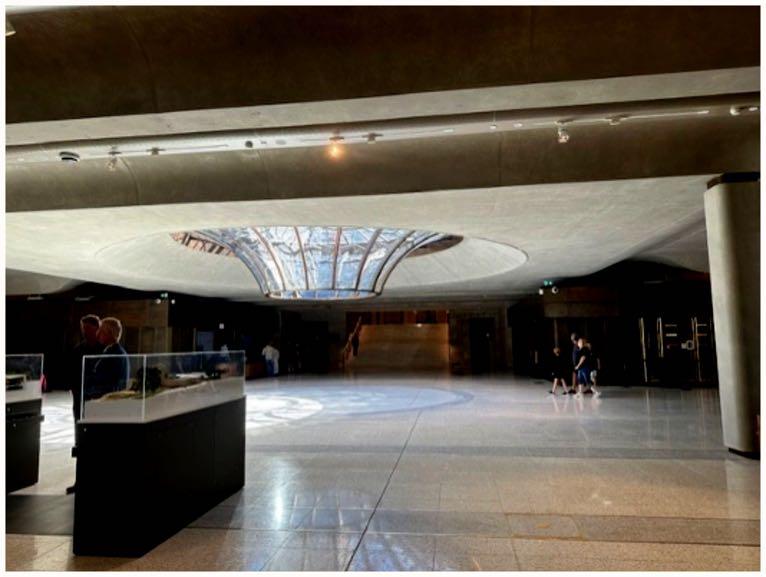

Greetings to all members from the Victoria division.
Since our last report we have held our Annual General Meeting. I was missing in action as I had to spend some time in Sick Bay. I am indebted to Chris Fealy and Rob Gagnon for conducting the meeting. Our committee for 2025 is as follows:
President Chris Fealy, Vice President, Rob Gagnon, Secretary Mal Smith, Treasurer Paul Thitchener, Committee Jeremy Butler, Paul Sorensen, Scott Myers and Ken Pryor.
Australian War Memorial Extension. View from the Forecourt’s new Subterranean entrance (photos Bruce Tunnah).
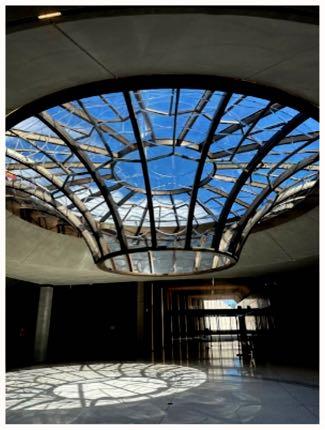
by Mal Smith


I now have the details for the ANZAC Day March and Reunion. We generally have a few members from interstate divisions join us and if anyone is interested please contact me and I will be happy to forward them.
ticularly over recent years, it is an eye opener.
by Malcolm Smith
Once again this year HMAS Cerberus will be holding an OPEN DAY. This will be on the 6th April. We supply several members to help out on the Melbourne Naval Committee stand. Many of you will not have been to Cerberus since recruit days and if you have the opportunity to attend it is well worth the effort. Many millions of dollars have been spent, par-
You may recall that I mentioned in the last issue of Slipstream that it appeared we may have to find a new venue for meetings. This situation has now eased with the Mission to Seafarers not going ahead with renovations for at least the balance of 2025. This gives us some breathing space and time to look for another venue. We are loath to move from the Mission as after a few teething problems it has proven to be very suitable.
Yours Aye, Mal Smith. ✈


G’Day again from W.A.
I hope this finds you all well and settling into 2025. As Australia and the rest of the world come to terms with climate, economic, humanitarian, and political changes, it seems we are living through a time of flux. It should be interesting, if nothing else.
by Sharron Spargo

The W.A. division is also experiencing some changes. Held earlier this month, the 2025 AGM saw a proposal by President Mike Keogh to make a change to our ‘general meeting’ format. We will continue to meet bimonthly, but our meetings will be much less formal affairs, with members and their wives and partners getting together in a much more relaxed and social environment. While the business of the division will be discussed by the committee and any other members who would like to attend, our get togethers will be shared lunches, with the occasional guest speaker. Mike Keogh suggested the change from a more formal format to one of friendship and camaraderie might attract more members to attend or induce others to join the FAAA. While attending these lunches will be at members own expense, the venue will continue to be Jonny Fox’s in Northbridge. This proposal was met with a resounding nod of approval, so the new format will begin in April. Our AGM will remain a formal ‘meeting’.
While the past couple of months have been quiet for our division, March will see 16 of us heading

down to Busselton for what has become our annual pilgrimage. There will be sun, sand, surf, wine, beer, good food and lots of laughter. We spend one day being bussed to various wineries, breweries and artisan shops and enjoy a scrumptious lunch, which this year will encompass the lovely town of Cowaramup. ‘Cow Town’ as it is known, is 12kms north of Margaret River and has become a major tourist destination in its own right. It may have something to do with the 42-life sized fibreglass ‘cows’ scattered around the town, and according to Wikipedia, Guinness World Records proclaimed that Cow Town set the record for the largest number of people dressed as cows – 1,352 – in 2014. You would have to think that setting that record would really put this agricultural town firmly on the map!
Plans for ANZAC day are coming together, as they are for our yearly fund raiser; the great Australian gastronomical event…the Bunnings Sausage Sizzle! No one exiting their car can resist the pungent smell of hot onions, drifting across the car park, then to be hit with the star of the show. The sausage! Gently bathed in a rich combination of either tomato or barbecue sauce, then the mustard, and wrapped in a soft white bun! Heaven. In the west, we take this uniquely Australian custom to the next level. No flimsy limp slice of bread for us. It’s a soft squishy bun all the way! If you would like to indulge your culinary senses and support our division, come on down to the Balcatta Bunnings on the 12 April!
The Voyager memorial, a seat in Kings Park, saw our mem-



bers, President Mike Keogh, Past Secretary Keith Taylor, and committee members Paul Hodgkinson and Ross Sarti (pictured)pay their respects on a warm overcast day in February. Numbers were slightly down this year, owing to a miscommunication between the organising committee and the ESO’s. We look forward to seeing the usual bigger crowd again next year.
On a personal note, I received a beautiful letter from the widow (a former Navy veteran) of a former FAA RANHFV member, who passed away in September 2024. He had received a copy of ‘Birdies’ via a friend and his loving wife of 54 years, read it to him as his illness meant he

Regrettably, QLD, TAS and NSW Divisions didn’t manage to provide an update this quarter but here’s a few snippets to let you know at least some of their newsas far as we know.
NSW Division has rescheduled its AGM to Saturday 29th March as it did not achieve a quorum at its previous attempt earlier in March. Please can you make a special effort to turn up to get the meeting started and to help elect the new nominees to office-bearing positions. Here is the DTG again: Saturday 29 March @ 1030, in the White Ensign Club which is

has drawn so much genuine pleasure from your exceptional record”.
Memories are priceless.

couldn’t. This gracious lady wanted me to know how much “your book took both of us back to such a happy time of our lives, during one of the most taxing periods we have lived through…I truly doubt there is another reader of your book that
adjacent to the FAA museum (on the airfield side).
TAS Division recently had a change in its management board, with outgoing Secretary Graham Nicholas handing his pen to Grant Andrews. Thank you, Graham, for your service to the FAAAA and all the best for your second retirement. Thank you also to Grant for taking on the role.
Our friends in QLD Div hold their cards pretty close so we have no gossip to share in this edition. I guess they have also had higher priorities on their minds with cyclone Alfred doing its thing, and the need for the subsequent clean up. We wish all our QLD members well and hopefully will be able to bring some of their news and views about the sunshine state (not so sunny in recent times!) in the June Slipstream ✈
Until next time, take care and keep well. Sharron ✈

NSW DIVISION AGM
Saturday 29th March 2025, commencing at 1030 in the White Ensign Club (adjacent to the FAA Museum).
Please make a special effort to be there as the last meeting had to be postponed due to insufficient numbers.
Since the September 2024 edition of Slipstream we have been advised of the loss of the following veterans.
Donald Marshall


Born in March 1930, Don served for 22 years, rising to the rank of WOATC.
Read more here

David “Larry”


David passed away on 13th December after a long battle with cancer.
Read more here
Gary James


Gary was killed on 26th October 2024 in a tragic air accident in NSW.
Read more here
John William
John passed away in Nowra in October, aged 96.
Read more here


Ronald Leslie
Ron passed away on 21 December 2024 after an extended battle with cancer.
More here


Garry
Garry died unexpectedly on 13th Nov 24, aged 77.
Read more here

Ian
Ian died In January 2025 after a long battle with dementia.
More here

Leith
Leith Gardiner passed on 21 October 2024. He was a member of WA Division.
Read more here


Neil
Neil Crossed the Bar on 16th September 24 aged 94.
Read more here

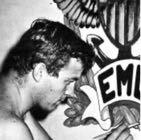

ROLFE
Kevin Francis

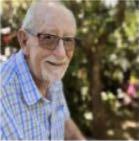
Kevin crossed the Bar on 8th November, after a long period of ill health
More here
Keith William




Keith was an early member of WA Div. He died on 14th October 2024, aged 90.
Read more here.
Ivan (John)

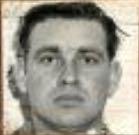
John passed away on 8th September 2024. He had served on the RANHFV.
Read more here.
Florence (Floss)

Anthony (Tony) Tony died on 8th February 2025m.

More information here


Philip
Floss died on 19th September after a long period of ill health.
Read more here
Robert (Bob)
Bob passed away peacefully on 30th August 2024, aged 91.
Read more here


John (Edmund)


John died on 6th March 2025, aged 86. His health had been failing for some time.
More information here.



David “Foxy”

Philip passed away on 8th September 2024. He was 74.
More details here.

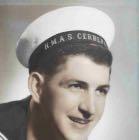
John Robert John passed away suddenly on 18th Feb 25, following complications from hip replacement surgery. More information here.
Foxy died on 3rd September 2024, aged 81.
More here


Anthony Rear Admiral Tony Hunt passed away on or about 9th March 25. He was 86 years old.
More information here.


A timely reminder that our National Welfare Officer is John Macartney. If you need to reach out to him for a chat or get get advice about welfare, benefits or any other matter, his email address is jrmaca@bigpond.com
Geoff Ledger has picked up the mantle of ACT Division Welfare Officer and is similarly available to offer advice etc for anyone who wishes to contact him. Geoff’s email is chadled@iinet.net. au. ✈
Peter Robinson is keen to track down the following people to assist with a reunion of 82 Pilots’ Course. If you know of the whereabouts of either of them, could you let him know here.
R.K. Lawrence (Ron) and M.V. Samuel (Martin [Surgeon LEUT])

RAN FAA Scrapbook History of the A4G Skyhawks and other FAA Fixed and Rotary Wing aircraft 1948-2025. Also “How to Deck Land” and information on F-35 variants and USN jets.
In Finland, Registrations start with “OH”.
Phil Thompson’s extraordinary archive of all things RAN FAA has just been updated. Click here to find out more, and read instructions on how to download it.

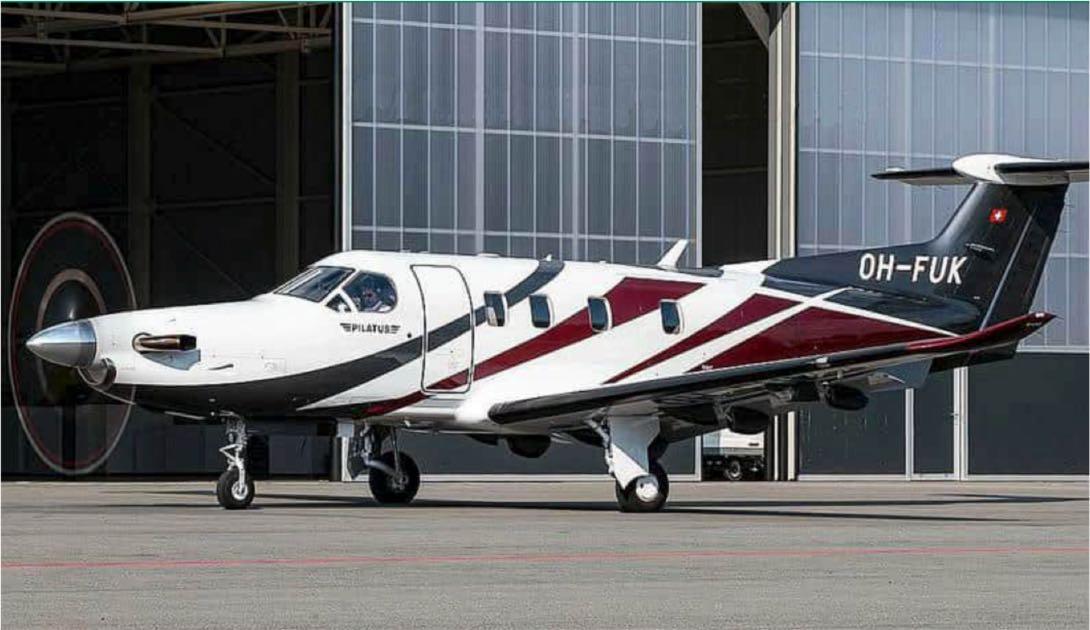
A couple of months ago we warned of a ‘pishing’ email (one that pretends to be one thing but is actually quite another), which purported to be from a genuine and respected FAAAA member to various addressees. The email asked the recipient to ‘do him a favour’ and contact him as he had something to ask. The ‘favour’ turned out to buy an expensive gift card for his (pretend) daughter. Needless to say the originator was not any of our members, but some scumbag who’s on the take. In recent days the scam has resurfaced, using a different member’s name.
So, the moral of the story is be alert. It’s unlikely anyone will ask for favours that way, and even if they do, its easy to check their story. Be aware and alert. ✈

By Rob Gagnon (VIC Division)
Aviators throughout history have been known to push the edge of the envelope to get the job done. There are many examples of successful and not so successful ‘push the limit’ flights in the history of powered flight. I am sure that those reading these pages have a plethora of examples in their own logbooks. Unfortunately, there are many of our peers who did not survive to learn from their mistakes.
As old and bold aviators, we look back on those times and wonder, “Did I really do that, and why?”. The last part of the question is the key to

HMCS Margaree flying the venerable CH-124A (early 1960s model of the Sikorsky Sea King). The ship was deployed on a six-month long attachment to NATO’s Standing Naval Force Atlantic working in European waters. It was the early 80s so things were hot in our cold war with the Soviets. An exciting time to be a young pilot with plenty of ASW and ASuW work and regular breaks in European ports. One of those breaks was a 3-week maintenance period alongside in Den Helder, Holland. To maintain proficiency, we organised a cross country to visit the Canadian Forces fighter base in Baden Solingen, Germany (approximately 300 nm) with a return planned for
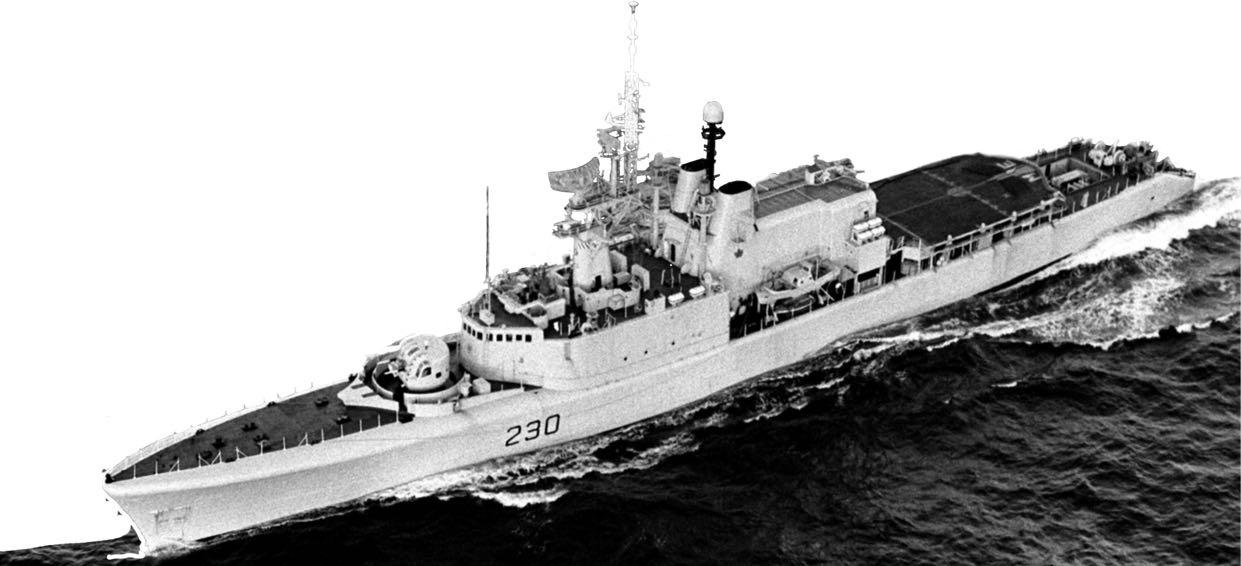

Unbeknownst to us, the ship’s XO had told other ship’s company that the aircraft was returning the day before sailing and that they should hitch a ride. So, on the day of departure 15 sailors showed up to get a flight back to Den Helder!
I should have told them to take a train! After all, they had 24 hours before sailing and the European trains were easy and quite reliable, even in those days. Instead, I sat down with my co-pilot, pulled out the books and tried to figure out if; A: the aircraft could take the increased load and B: what would happen if we lost an engine in flight. Get the job done if we could–right?
The gross weight with 22 people on board plus the required fuel was 22,000 lbs. That was 1500 lbs over max gross weight for the CH124A! There was no way that we could hover with that weight (it was summer in Germany). It turns out that the base had a 10,000 ft runway and we could achieve flying speed with a running take off to at least 45 kts. No worries! As to single engine performance, we would not have one engine flying speed for the first 1.5 hours. However, since we were going to be following the Autobahn for the first 2 hours, we would always have a runway available. Surely a no-brainer! That is what Hitler created those nice straight, wide roads for right? We would only have to dodge the Porsches going 200 KPH! What about seating and passengers securing? No worries, if they wanted to get back to the ship, they would have to live with some discomfort. I had carried more people than seats before but that was during a rescue in the North Atlantic where it was life and death – certainly not the case here! But having seen it before, in my immature mind it presented no problem.
So, it was possible to do the job, but the question should have been: was it necessary? That never entered our minds.
I am embarrassed to say that we went ahead and flew the mission. A huge lesson learned for me in when to push the envelope – certainly not in this case! While there were no incidents, it was incredibly stupid and entirely unnecessary. There were plenty of other times in my career when I had to push the envelope but always for operational necessity or safety and never just to
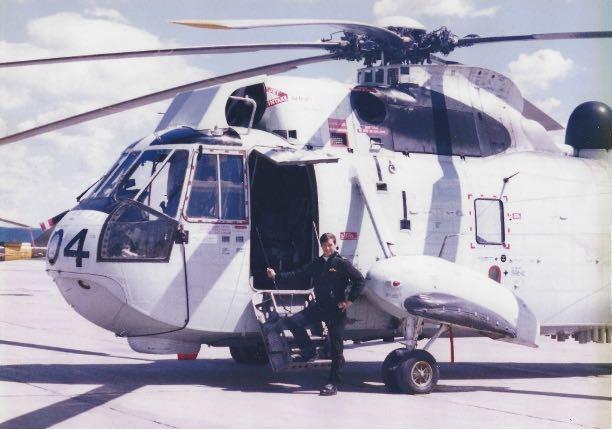
Rob Gagnon and his trusty steed 1980.
get the job done because ‘I could’. This incident taught me a valuable lesson and I hope that some young aviator reads this and perhaps rethinks an unnecessary choice in the future.
Rob Gagnon
P.S. You should have seen the face of the Customs Officer in Den Helder when 22 people filed out of the forward personnel door of an aircraft fitted for seven! Priceless, but not worth the risk! ✈
Do You Or Hate It? Love It
This new look Slipstream is evolving, and your feedback on what you like or don’t like about it will be extremely valuable. Please can you spend a minute letting the new Editor know? Simply click here to send him an email. ✈



The story of N106US after the Miracle on the Hudson

We all know the story of US Airways Flight 1549 which suffered a birdstrike on 15 January 2009, and ditched in the Hudson River. All 155 occupants aboard were unhurt in what became known as “The Miracle on the Hudson”.
But what happened to the aircraft?
N106US was an Airbus A320, delivered to US Airways in 1999, ten years before the accident. Severely damaged and waterlogged, it was pulled from the water on 17 January and moved to Kearney, New Jersey, where an analysis of the accident continued. Satisfied that it had indeed been caused by power loss after multiple bird strikes, the insurance company decided to put the airframe up for auction.
Unsurprisingly they got no takers, given it had been submerged for two days and was severely damaged. And so it was donated to the Carolinas Aviation Museum where it became a game changer for revenue. Visitors could not only see the airframe but witness videos of passenger testimonies.
The Carolinas Museum closed in 2019, and, after undergoing a five year ‘reimagining’ reopened adjacent to Charlotte Douglas International Airport in North Carolina. It has been called the “Sullenberger Aviation Museum” after the pilot who guided the aircraft into the river. ✈
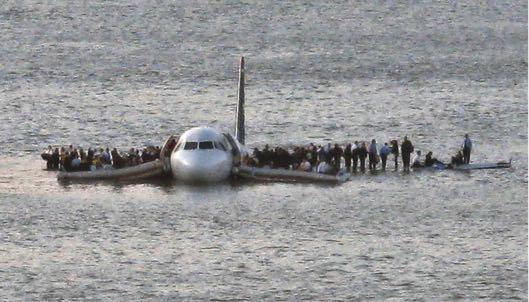



By Dr Sharron Spargo
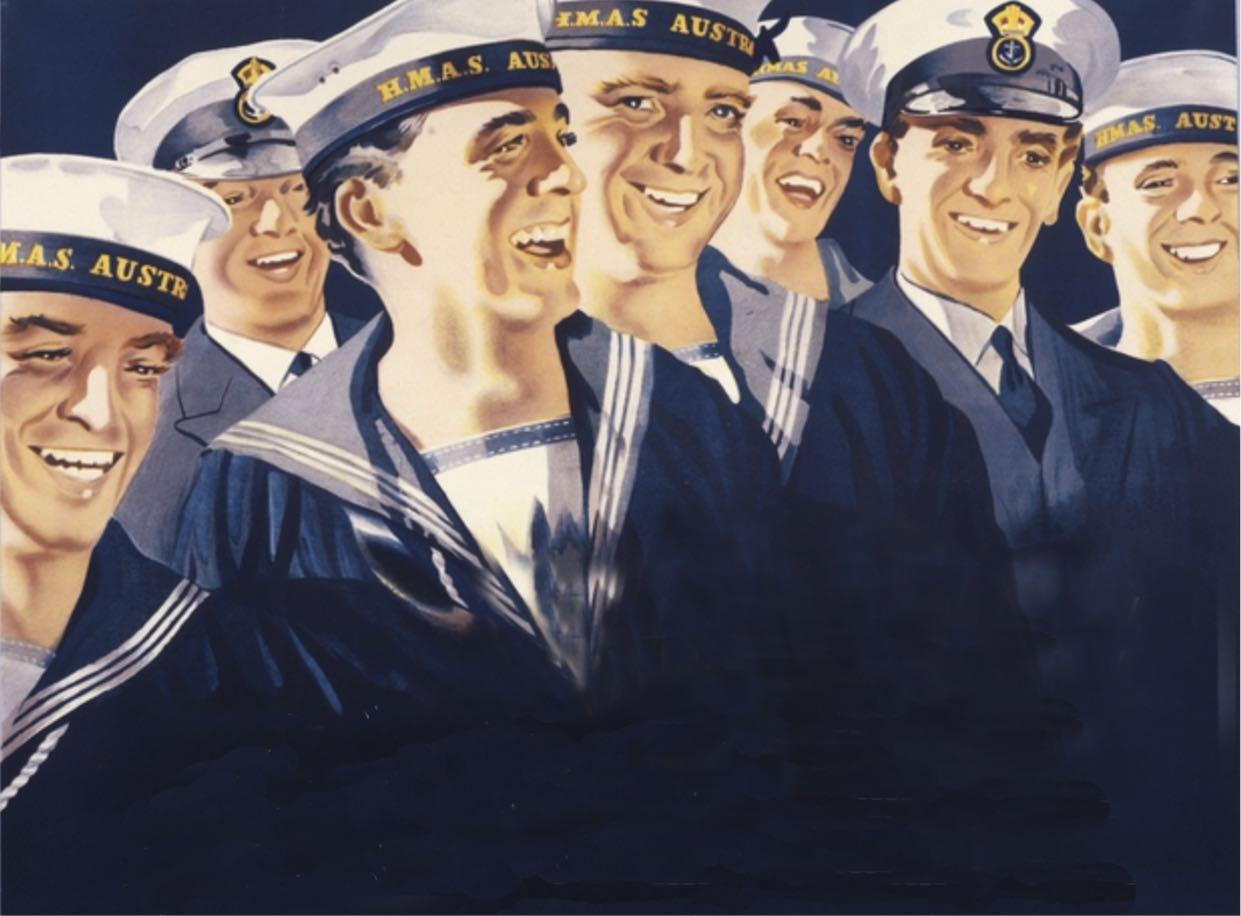
Here was this picture of waving palms, a few sailors standing and talking, good-looking young fellows of course, and in the background, standing in admiring groups, clutching their hands were grass skirt-clad maidens with flowers over their ear, gorgeous looking creatures, and I thought… ‘Jesus! This is for me’!”
Afew years ago, I interviewed Fleet Air Arm veterans regarding their service for my PhD dissertation, and from there I wrote the book ‘Birdies. The Australian Fleet Air Arm’. I asked my interviewees why they joined the FAA and I thought that their answers might be of interest to Slipstream readers.
In August 1947, J.J. Harrison was leafing through the West Australian newspaper, when he saw an advertisement that changed his life: Be among the first! Join the Navy’s Fleet Air Arm! I thought, my God, this looks good! Here was this picture of waving palms, a few sailors standing and talking, good-looking young fellows of course, and in the background, standing in admiring groups, clutching their hands were
grass skirt-clad maidens with flowers over their ear, gorgeous looking creatures, and I thought… ‘Jesus! This is for me!’
Andy Powell was also influenced by a recruitment poster, but for different reasons:
“I was walking down Forrest Place [Perth] when a poster in the window of Navy recruiting caught my eye. In general terms it offered males between 17 and 21 years of age a chance to apply to learn to fly aircraft in the Navy’s newly formed Fleet Air Arm, and a chance to have an exciting life. I knew nothing about the Navy, a lot less about aircraft. I’d never been near one, and even less about flying. Given my frugal lifestyle, working by day and studying by night to pass the leaving certificate and matriculate, no hope of having the money to go to university, and the patriotism of my father’s family, it seemed like a good offer to accept.”
While Harrison and Powell were induced by adventure and security, it was a different story for James Buchanan:
“1962 was a momentous year for me. It was the year I first fell in love and the year I joined the Royal Australian Navy. There may seem no direct connection between these two events, but they followed along, quite naturally, as a story of;

‘Boy meets girl…they fall in love…Girl runs off with someone else…Boy joins the French Foreign Legion!’ In this case the French Foreign Legion was replaced by the Royal Australian Navy, which seemed to be the only service recruiting, at the precise moment I needed a sanctuary.”
In not dissimilar circumstances, Jack Herbert found himself in the FAA without any clear reason for doing so. He was neither passionate about the Navy , or flying, but found himself in the FAA simply because he was unhappy in love:
“My mate Len and ‘I’m going to join, will you come with me?’He failed the medical. We were both vying for the same girl at the time, so oh yeah, that was accidental. Len got the girl. They were pushing the FAA at the time and I probably just signed where they told me to.”
All Nat Gould ever wanted to do was fly aeroplanes. He grew up in the post-World War Iera,thedaysoflegendarypilotslikeKingsfordSmith, Amy Johnson, and Bert Hinkler. Veterans of the Royal Flying Corps fired a young boy’s imagination, so to raise money for flying lessons Gould collected cow manure and mushrooms to sell to the locals. By the time he was 18 he had his license and had enlisted in the army reserve by the time the Second World War began. The RAAF approached him to join and he flew Hurricanes in Britain before joining the world’s first aircraft carrier, the converted ocean liner HMS Argus. The ship headed to an airfield in Russia outside Murmansk where he found himself teaching Russians how to fly and maintain a Hurricane. After heading back to Britain and spending time on Spitfires, Pearl Harbor was bombed, and the tide of the war was turned.
The Japanese attack spurred Gould and many other Australian pilots to return to Australia in 1941, and with Port Moresby and Milne Bay behind him, the Royal Navy beckoned in 1945. Flying off the British aircraft carriers Implacable and Indomitable until war’s end, Gould and four others signed on with the RN for four years so they could keep flying. When the Australian FAA was formed Gould received a letter from the Australian Navy Board: ’Dear Lieutenant Royal Navy Gould, would you like to join our Navy?’ ‘You bet…the pay was better!’
In 1948 Noel Knappstein, who went on to be a commercial pilot, was also influenced to join by his love of aircraft. While he wouldn’t have necessarily joined the Navy, he saw the FAAas a way to forge a career doing what he loved while helping to support his widowed mother.
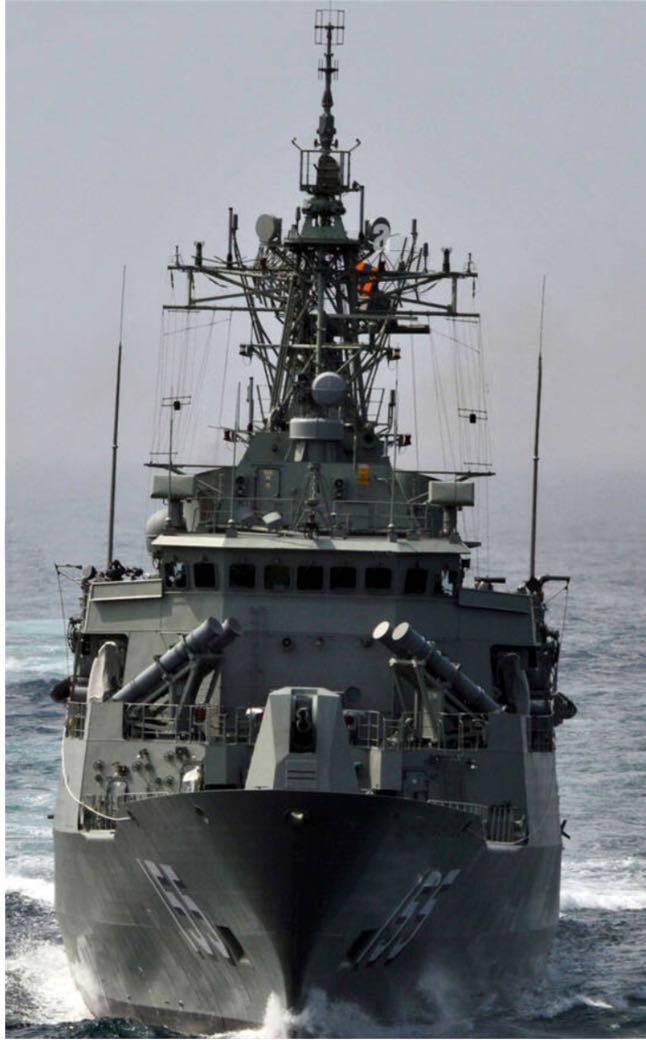
As PeterAdams remembers,
‘I had wanted to be a pilot ever since I could say airplane and look at them, and the Navy sounded like a better idea than the Air Force. You got to see places, you got on a ship and went around the world, and you could fly at the same time. I saw more potential to get things out of life in the Navy than in the Air Force, so I went for the Navy’.

Aircraft Radio Mechanic Keith Taylor calls his entry into the Navy ‘a quirk of fate’ as his working life began as a technician in training for the Postmaster General’s Department. His dedication to study did not reach the level of his practical ability, which led to a position as a clerk in the engineering branch. This sideways move caused Taylor to consider his options, as he explains:
“I don’t think I had ever considered the services. It was a just an off the cuff decision and I joined as an electrical rate and became an aircraft radio



mechanic. If I had my time over again, I’d join the Air Force as it’s much easier! You don’t go away anywhere, and they don’t send you out to get shot at! It’s the reverse of every other service where the officers stay behind the lines and the men get shot at, but in the Air Force they send their officers out in the aircraft and the men stay behind the action. The decision was like a lot of others in life; I could go this way or that way. I chose this way.”
For Doug Rasmussen it was a case of ‘I was in a dead-end job, and I thought; a little bit of adventure is a good thing’. For Don Lorimer there wasn’t really a reason; ‘I don’t know why, I just fancied it’, but for Brett Dowsing, it was the fulfillment of a dream:
‘I had dreamed of a life that included aviation and chose the RAN over the Air Force. I think it was the romance of it, the isolation. Operating at sea you’re isolated; naval aviation just stuck out by far as probably the most exciting’.
For pilot Tony Dalton, the attraction was very much the same;
“I had a choice to join either the Air Force or the Navy, as I had been accepted by both for the same pilot’s course. In the end it was the opportunity to fly and see the world that persuaded me to accept the Navy offer. My primary interest was aviation; it was a boyhood thing that I still haven’t grown out of. I would not have joined the Navy or any other service to be anything other than an aviator.”
Brian Poole felt the same way about flying; he can’t remember not wanting to fly but had a hard time convincing his parents that a career in naval aviation was a good idea.
They could see no future in it, but Poole saw the advertisement in a newspaper and that was it.
Naval Airman Recruit Ron Davis went on to serveasanaircrafthandlerandtraceshisinterest in aircraft back to living near MascotAirport in his formative years. Coupled with a favorable chance meeting with an officer in the naval cadets, at 12 years of age, Davis joined the Sea Cadets and from there he served in the FAAfor four years.
Another who began his naval career at a very youngagewasjuniorrecruitDennisNixon.Inhis 15th year Nixon was dissatisfied with school, and an interest in aircraft prompted his service.
As Kim Ferguson remembers it,
‘I was about 12 years old. I was standing outside the Cummins area high school and a Skyhawk jet did a great big dive on the school, and of course all our dreams were set alight by that. Me and all my friends looked around and watched this jet climb and twist and go through the sky. That started the fascination with airplanes’.
Then of course there were those who knew nothing of this new aviation branch, they just joined the Navy:
The decision was like a lot of others in life; I could go this way or that way. I chose this way.”

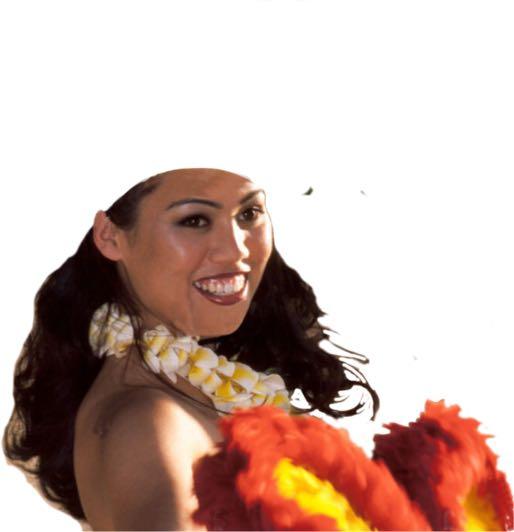

“They just said there are ships and air and you’re going to do aircraft. No one volunteers. All those who want to be in the FAA take one step back! Everyone steps forward and they say fine, you’re all going. Step forward or back, it doesn’t matter, you’re in the FAA. I was an aircraft electrician; it didn’t make any difference whether I liked it or not. I just switched off and did my job, for 18 years!”
For aircraft handler Robert Gilmour, it was his civilian job as a telegram boy in Brisbane that sparked his interest in the Navy. It was 1959 and he had grown up seeing men in military uniforms, and many of his work colleagues were exservicemen:
“The Navy sounded pretty good but I didn’t know if I’d be much good as a sailor, so when I applied to join the Navy they mentioned this FleetAir Arm and I thought I could see myself flying airplanes. When I went to the recruiting office, I got all the information on the Fleet Air Arm and decided to join as a naval airman, non-flying, which meant that it would be one of the 11 lower deck categories. The choices were Airframes, Engines, Ordinance, Meteorology, Safety Equipment, Aircraft Handling, Air Electrics, Air Communications, Air Traffic Control, Fire Fighting, and Motor Transport. I joined as an aircraft handler.”
TozDadswellwasfromafarmingfamilybut looking to escape what he saw as an uninspiring future spent in long, hard hours on the land. He joined the Navy in 1946, simply because ‘one day a cow slapped me across the face with a wet tail and I decided that there must be a better life for me than milking cows’.
“I started flying in 1955 because they wanted two college officers to go flying and one of them failed his medical, so I got in. I hadn’t wanted to fly, I wanted to be a navigator, but as soon as I went solo in a Tiger Moth I knew where I should be. I had a wonderful life.”
When David Farthing joined the Navy as a 15-year-old in 1955 he had no inkling of his career-changing course. Years later and serving as Direction Officer working with the aviation branch, he came to the conclusion that if he was to be part of the FAAhe would much rather be a pilot.
Observer Geoff Vickridge followed his father’s example when he joined the service in 1958, and was a sonar operator and ship’s diver before serving as Commander’s Writer in 1963. From there Vickridge served as Captain’s driver during which time he qualified as an officer and he recalls his decision to change branch to the FAA:
“When I went up for the interview and they said what do you want to be, seaman officer or aircrew officer, this was late 1963 or early 1964, and as a joke, I asked which one paid more. The answer was aircrew.At this stage, I’d never even been in an aeroplane, so about 8 weeks later I found myself down at Cerberus in a basic aircrew training course.”
In addition to targeting young civilians, a recruitment signal was sent to theAustralian Fleet on 13 June 1947, which meant that many serving memberswereawareoftheopportunitytotransfer to the FAA. John Bolton was already serving in the Navy, doing a job he loved, but the opportunity to think outside the box caught his attention:
“I think I was one of those people who saw the romance of the sea. The Navy was the life I wanted. While the Vampire was between Singapore and Sydney a signal came out advertising a course for experienced UC’s to become sonar operators on Wessex helicopters, so I thought boy, how good is this, I’m in the Navy but you can go flying. So, I went to Albatross and discovered a whole new world, aviation, and fell in love with it. I was just smitten with flying, probably because it opened up a world where you became an independent person rather than a number in a machine. You were solely responsible for an operation and responsible to


provide a result and I quite liked that. When I started flying I suddenly wanted to be the best at whatever I did.”
Harry Webster recalls what prompted him to change direction:
‘Being a 19-year-old brave young sailor who had recently witnessed the sinking of HMAS Warnambool after having struck a mine I thought ‘Bugger this! I’ll volunteer’.
Those transferring from various branches of the RAN were joined by many others who had been serving in both the New Zealand and Royal Navies. RN Chief Petty Officer Gordon Evans recalls what prompted his move to theAustralian FAA:
“My selection for loan to the RAN was partly due to the boredom of post-war naval life and the Tot [rum issue]. Lounging around in the PO’s Mess after ‘up spirits’, somebody mentioned a notice on the board about volunteers wanted. Hardly reading what it was all about, especially through a soothing rum haze, I signed it…two months later, a pier head jump to join the future HMAS Sydney at Devonport, and be attached to the 20th CAG.”
Anthony Adams made a conscious decision to join the FAA:
“I had wanted to be a pilot ever since I could say airplane and look at them and the navy sounded like a better idea than the Air Force; you got to see places; you got on a ship and went around the world, and you could fly at the same time. I saw more potential to get things out of life in the Navy than in theAir Force, so I went for the Navy.”
There are many stories like these that the older veterans remember, but for the youngergeneration,itwasthefascinationfor helicopters, and the challengers of flying and maintaining them that saw another chapter of the NavalAviation story develop. ✈
Most of us didn’t sign up for love, fame or fortune. Some (like the Editor) were at a loss to know what else to do with their young lives, or perhaps you were running from the law (he wasn’t). Send the Editor a quick email about your reasons. We’ll publish the best ones in the next edition. ✈

Have you thought about getting your name put on the FAA Wall of Service?
It’s a unique way to preserve the record of your Fleet Air Arm time in perpetuity, by means of a bronze plaque mounted on a custom-built wall just outside the FAA museum. The plaque has your name and brief details on it (see background of photo above).
There are over 1000 names on the Wall to date and, as far as we know, it is a unique facility unmatched anywhere else in the world. It is a really great way to have your service to Australia recorded.
It is easy to apply for a plaque and the cost is far less than the retail price of a similar plaque elsewhere. And, although it is not a Memorial Wall, you can also do it for a loved one to remember both them and their time in the Navy. Simply click here for all details, and for the application form.
Names in Order No.54 have now been affixed to the Wall (see list below). Order No. 55 is open for applications.
B.B. Batchelor LAMAE R58727 Mar 62-Mar 71
D. Buchanan CMDR (P) O139 Jan 48-Oct 56
H.G. Dowling LCDR SDATC O141680 Jan88-Jan92
J.T. Jeffrey POATC3 R62765 Jan64-Feb84.
A.R. Palmer LCDR GL (P) O137865 Jan 86-Oct01
D.A. Rendell CSM CMDR(O) O111134 Jan72-Jul20
F.I. Rubly POATC R54295 Apr58-Dec70
R.B.Sellers CMDR(P) O126762 May79-Jul 10
S.J. Wake CSM WOATV 147344 Mar90-Mar22
H.G. Wakeford CPOATV S131208 Feb81-Feb01
I.G. Warren WOATA R59101 May62-Jul95.


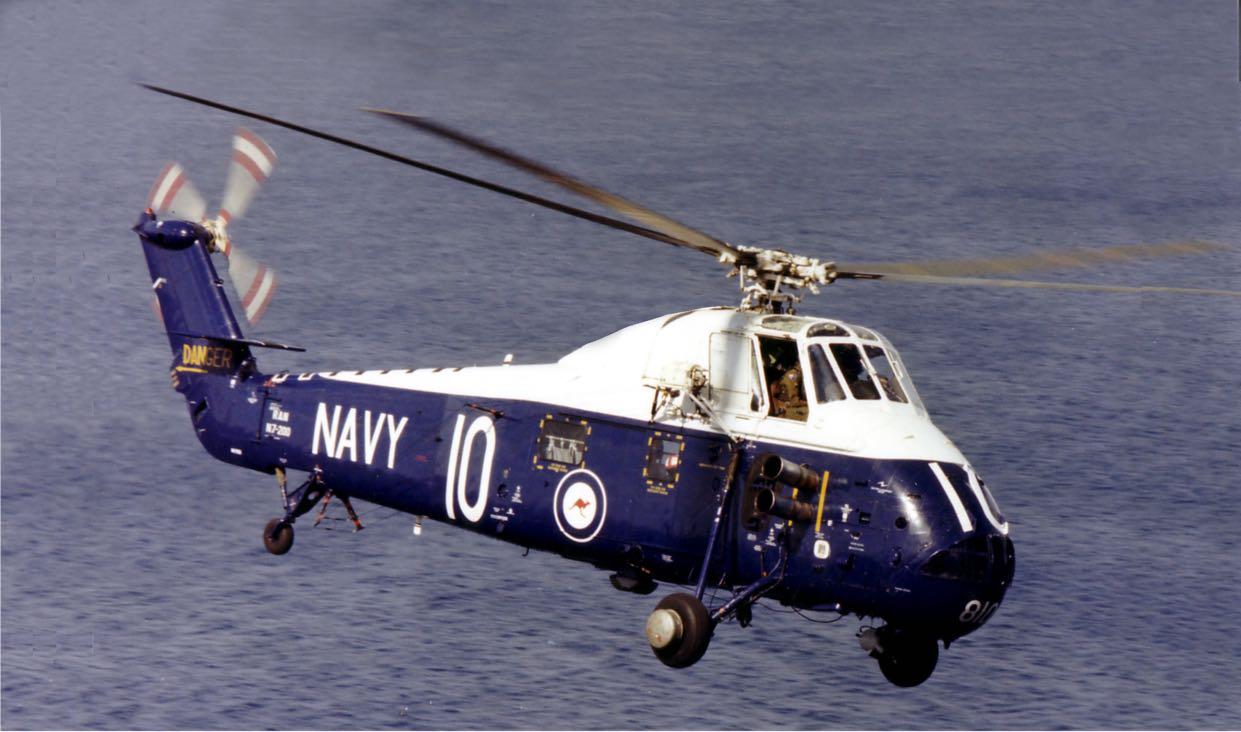
And it came to pass that the birdman, the sons of None, were gathering together in the Holy place known as Control Tower Briefing Room.And there came one among them, called Met, and saith unto them, “Fear not for behold, I bring you tidings of Great Joy. I have had a dream that indicated naught but clear skies and visibility unlimited.” Then did they revile him saying, “Yea verily, we have looked out the window and have seen naught but rain showers and Cumulobumpas.”
And the birdman proceedeth to J Hangar and girdeth themselves for the approaching battle with the beast known as Wessex.And one of the warriors was beset by trembling and redness of the eyes, for two evenings past he attendeth the wine tasting and he seeketh out his friend saying, “Many times have I been like a brother unto thee. Wilt thou not therefore taketh my place in battle this night, for I am indeed ill.”And his friend answered saying, “Thy transmission is weak and I readeth not.”
And the birdmen performeth the ritual known as the Pre-flight, but they faileth to find a weakness in the beast and they muttereth to themselves of the good old days and flying machines with fixed wings.
And they proceedeth to the place known as Contact, and the sky is dark and the doppler appeareth not.And their hover coupler is beset by devils.And the beast Wessex attacketh them with
rocks in roll, and kick in pitch channel and the birdman crieth out saying, “Windmill Leader, wilt thou not alloweth us to return to base, for verily we have fought the good fight.”And the Leader answereth them with angry words of “Poor show and frozen promotions,” and giveth them fire and brimstone in general.
And the warriors returneth and the disciple known asALO meeteth them crying, “Hosanna! Blessed is he that returneth from the fray.”And the birdmen answereth him saying, “Get thee behind me Satan, for this night we have seen the result of thy works.”AndALO speaketh to them of integrators, proportional amplifiers, and accelerometers, but the birdmen beat him about the head and shoulders and tell him of the evil powers of the beast Wessex.
And the birdmen proceedeth to the wardroom to receive the burnt offering known as “Night Flying Supper.”And they tell of their great adventure and how they conquered the Beast, and the truth is not in them.
And the warriors groaneth and travaileth in their heart of hearts, for they know that if they survive the offering, they must sally forth on the morrow to meet once again the beast known as Wessex.
Copied from the SA Division Fleet Air Arm Newsletter April 1987. Author unknown. Submitted by Roger Harrison. Hon. Whipping Boy SA.✈


The inaugural meeting of the FAA Museum Advisory Committee (see draft TORs here) was held at the FAAM on Tuesday 18 March 2025. Present at the FAAMAC was Director Sea Power Centre – Captain Alastair Cooper, Director FAAM – Ms. Jen Alder, CO ALB – Captain Paul Hannigan, and FAAA Representatives – Stuart Harwood and Vince Di Pietro.
More immediate matters such as:
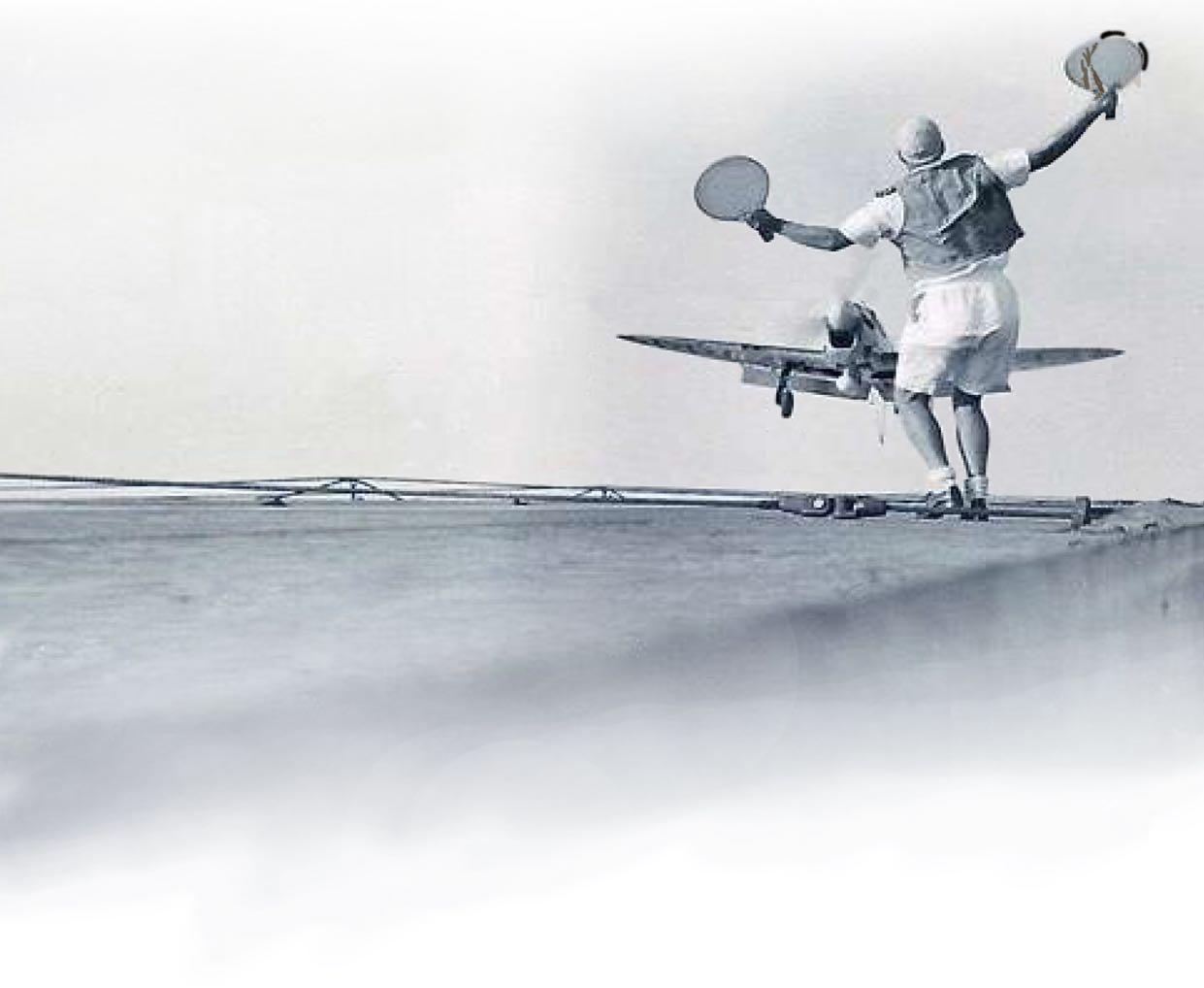
The FAAMAC complements and assists the management of the FAAM in a good direction. It will provide advisory expertise and corporate knowledge of the Museum inventory and improvements for the future to NAVY while respecting the Defence Policy and guidance pertinent to Historical Collections. The primacy of the FAAM as the ‘jewel in the crown’ of Navy (and Defence) Heritage is acknowledged. It is intended to broaden the membership of the FAAMAC to include Shoalhaven City Council at subsequent meetings. The FAAMAC will meet three times a year and the next meeting is planned for 25 June 2025.
• the opening hours of the Museum were discussed. It was accepted that the reduced opening hours for the museum may be causing reputational damage as people are not able to access the museum during the week. The roadblock to this is staffing and management efforts will be made to increase the number of reserve staff in the FAAM, as well as a stronger volunteer programme. This will help increase the museum’s capacity to accommodate more opening hours with consistency.
• The acquisition of an MRH-90 for display in the FAAM remains a work in progress with the Army Heritage Unit to complete the loan of the MRH-90.
• Approaching Navy Anchorage (Canteen management) to improve the current refreshment/snack availability for visitors.
• Making displays more contemporary by making better use of digital visuals and sound.
• Updating the FAAMAC on refurbishment (as yet unfunded) plans for the Museum entrance and current foyer area.
Brief Minutes of the meeting can be seen here. ✈
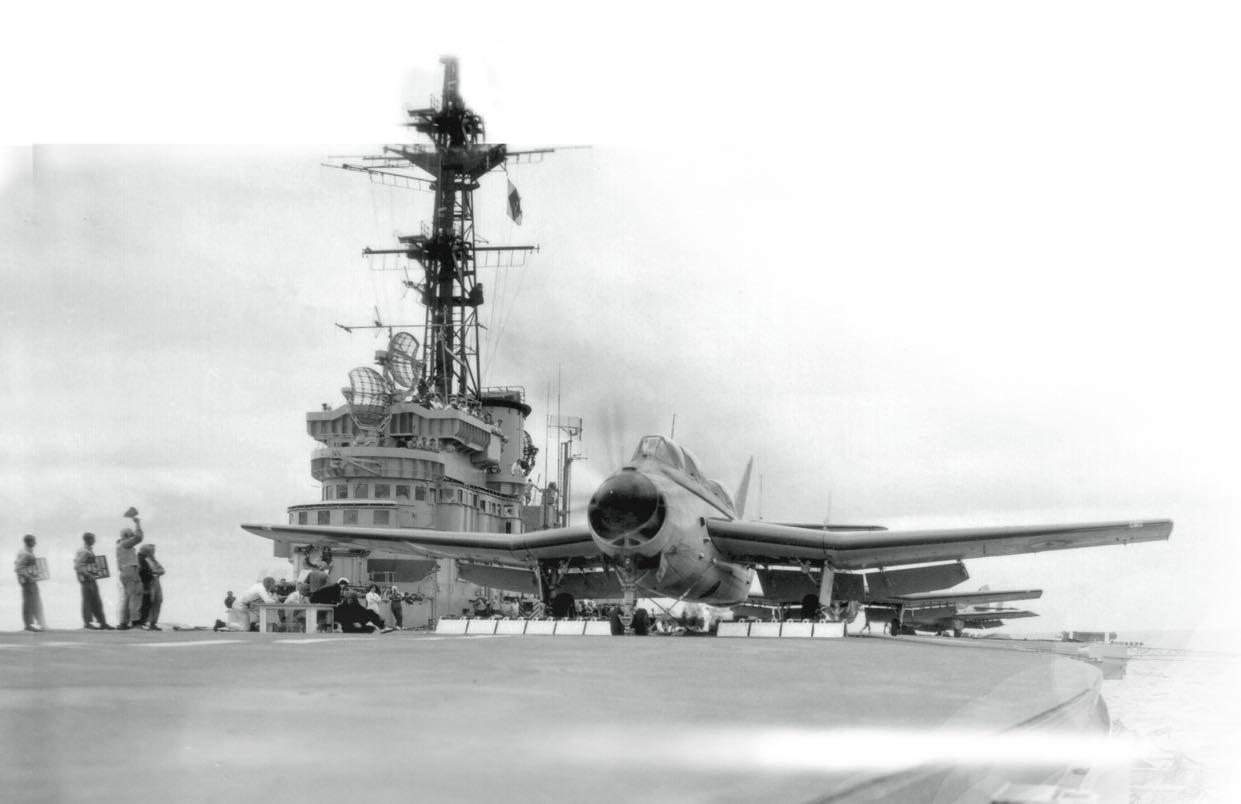


by Marcus Peake


In the years just before WW1, the Royal Navy’s submarine arm was weak and neglected. In an effort to reverse this situation the Admiralty madecatastrophicmistakesthatwere tocostthelivesofhundredsofBritish sailors.
Of the sixty-four submarines in commission in the RN at the outbreak of WW1, only 17 could operate beyond the coast. The remainder were old and obsolete, victims of a Naval budget obsessed with the race to build more Dreadnaught class battleships, and an entrenched view that “submarines were the weapons of weaker nations” and “underhand, unfair and damned un-British.” Even the Navy’s first Inspecting Captain of
K4 aground off Walney Island after a collision with K1, which was lost.
Submarines, Captain Edgar Lees, said “The British Navy has never wanted submarine boats, but a share in their evolution has been forced upon us by other nations.”
The view was not shared by Lord “Jacky” Fisher, who was recalled as First Sea Lord in 1914. A decade earlier, in his first appointment in that position, he had laid down the foundations of the Submarine Service amidst fierce opposition. Politicians and naval officers had referred to him as “a lunatic”, but Fisher saw the submarine as the coming Dreadnaught. As early as 1904 he had said “I don’t think it is even faintly realised...the immense impending revolution which the submarines will effect as offensive weapons of war.”

When Fisher was recalled by Winston Churchill he was appalled to find that the Navy

had 12 fewer submarines than when he had initially held the job four years earlier. He set about rectifying the situation.
The pressure to build modern and fast submarines was reinforced on New Year’s Day of 1915 when HMS Formidable was torpedoed by U24. The tragedy aggravated the rumour that German Uboats could outpace a battleship, and Fisher wrote to Jellicoe: “We can’t touch their submarines. We know that two of them have gone 19 knots on the surface.”
In Fisher’s mind it was paramount to overtake German submarine technology, both literally and figuratively, and to have a Fleet submarine capable of working with his capital ships. He immediately ordered the design of a submersible capable of at least 20 knots on the surface.
Eustace d’Eyncourt, the Director of Naval Construction and a brilliant maritime engineer, had previously suggested steam to power submarines, but the notion had been dismissed. Now that speed was an imperative however, he again proposed the use of steam turbines, pointing out that no diesel submarine yet designed for the Navy had exceeded 15½ knots, and to extract another 4½ knots from existing engines was not possible. With steam, he said, he could guarantee more than 20 knots. Fisher had never served in submarines but his instinct told him that boilers, funnels and submersibles did not mix. Indeed he had initially
resisted the notion of steam powered submarines, but the pressing operational imperative now changed his mind - so when the design for the new, large submarine appeared on his desk at the end of January 1915 he authorised the construction of eight of them. They were designated the “K” class.
It wouldn’t be long before the men who served in them, never ones to mince words, christened them “The Kalamity Class”.
On paper the new submarines were impressive, displacing some 2000 tons on the surface and with an overall length of 339 feet, making them bigger than most destroyers of the time. They were fitted with no less than seven separate propulsion systems: two oil-fired boilers driving separate steam turbines for surface transits, four electric motors for submerged operations and an auxiliary diesel engine for charging batteries and emergency propulsion.
The vessels were originally armed with ten 18-
The loss of HMS Formidable on New Year’s day, 1915 was a pivotal moment in the decision which submarines Britain would build. Below. A newspaper illustration showing Captain Loxley, and his dog Bruce on the bridge of the stricken battleship. Formidable was initially struck in the boiler room by a single torpedo fired by U-24, who subsequently fired a second to finish her off. Loxley and several of his officers decided to go down with their ship, a quaint but futile mindset of the time. Bruce didn’t get to choose.✈



Although submersible steam turbines are well accepted in our age of nuclear submarines, back in the early 20th century they were a novel and controversial notion.
Steam power required oil-fired burners, which produced enormous heat in an enclosed space. It also required many holes to be cut in the pressure hull, some as large as a metre in diameter, to accomodate ventilators and exhaust ducts.
To submerge, the furnaces had to be extinguished, exhaust funnels retracted and the holes hermetically sealed. The residual heat inside was so fierce that the boiler spaces, where the largest holes were located, were totally uninhabitable during submergence and had to be abandoned.
Common sense told you that steam and submarines of that era simply didn’t sound sensible, and time showed that to be right - so why did they do it?
The answer was speed. Diesel-powered German Uboats of the time were far advanced and thought to be much faster than their British equivalents, and the Admiralty wanted to catch up - literally.
Further, the Admiralty was fixated with big capital ships and the requirement for every element of the Fleet to work with them. Ignoring the most precious of submarine tactics - stealth and independence - the British decreed that submersibles should be able to sail with the Fleet as an integral part of it.
The idea was that high-speed submarines would work with the cruiser screen ahead of the main battle force—positioned to submerge and attack an oncoming enemy battle line before they could engage the British fleet. This required submarines capable of 21 knots surfaced, even under typically adverse North Sea conditions. And the only way to achieve this was by steam power. ✈
K-15 with a modified bow to prevent porpoising during surface transit. She was later to spontaneously sink in Portsmouth harbour although the crew managed to escape. ✈

bulkheads were only designed and tested to 70 feet, risking their collapse if any part of their hull was compromised below this depth.
To submerge, first the boiler fires were extinguished to prevent the build up of noxious fumes; then the twin funnels were lowered into horizontal housings by a complicated system of hydraulics, rods and levers. The main intake ventilators were also then closed - with the whole process taking up to 7 minutes to execute. The theory was that the vessels were so fast they could turn and outpace any threat if they were attacked on the surface, negating the need for ‘crash’ dives.
No trials had ever been conducted with a prototype so it fell to the first production submarines to demonstrate their design and handling. It didn’t go well. K3, the first of the class to be completed in mid 1916, soon showed design problems. During speed runs, her Boiler and Turbine Rooms became so hot that the hatches had to be left open, and a head sea cracked the conning tower windows.
On an early test dive the boat lost trim and burrowed into the muddy sea-bed with her propellers thrashing the air above. It took 20 minutes to back her out and return to the surface. Then, in January 1917, on one of her first war patrols from the Grand Fleet’s main operating base at Scapa Flow in the Orkney Islands, she shipped a beam sea and took so much water down the funnels that her Boiler Room nearly filled up and she limped home on her diesel engine.
K13, the second to be completed, began her career with a tragic accident. On 29 January 1917, during what was supposed to be the final test dive of her acceptance trials, one or more of the 37-inch Boiler Room ventilators failed to
close, and all spaces aft of the midships Torpedo Room flooded. She settled to the bottom in 60 feet of water, with 49 survivors trapped forward and 31 dead aft. A tortuous 50hour rescue operation followed, with the survivors saved. Amongst the recommendations of the inquiry was that no future submarine should bear the unlucky number “13.” Accordingly, after K13 was raised and refurbished, she was recommissioned in October 1917 as K22.
Despite this disastrous start the British pressed ahead with the K-boats, building a total of 21 of the vessels.
It took only 8 months before men started dying in K-boats - and none of them through enemy action. Design flaws, handling characteristics and ridiculous strategies cost the lives of around 300 submariners before the last of the class were scrapped.
To be fair, four of the eight boats that sank were the result of collisions, but it could be said that their poor handling characteristics were at least a contributory cause. The rest were lost through

The first K-boat entered service in May 1916
K13 Sank during acceptance trails Jan17
K1 Sank after collision with K4 Nov17.
K4 Sank after collision with K6 Jan18.
K17 Sank after collision with HMS Fearless Jan18.
K5 Lost on Exercises reason unknown Jan21.
K15 Sank in Portsmouth Harbour Jan21.
K18/M1 Sank after collision with SS Vidar Nov25.
K19/M2 Sank on Exercises Jan32. ✈

The imprudence of operating submarines in formation with ships of the Grand Fleet was tragically demonstrated on the night of 31 January 1918 in what became cynically known as “The Battle of May Island”.
Around 40 vessels left Rosyth that afternoon, bound for Scapa Flow. This included the 5th Battle Squadron of three battleships and their escorts; the 2nd Battlecruiser Squadron of four battlecruisers and their escorts, and two flotillas of K-class submarines comprising nine boats. Before the night was ended no less than five separate collisions were to occur, with two submarines lost and 104 men killed. Four other submarines and a light cruiser were badly damaged.

The damaged bow of HMS Fearless after ramming K17. Forty-seven men were lost from the submarine.
The impact bent the first 30 feet of the submarine’s bow at right angles and wrecked the ballast and fuel tanks. The boat settled by the bow until only the conning tower showed.
The Battle Squadron steamed ahead of the submarines, with the Battlecruiser Squadron following up. Initially all vessels were in long line astern on a steady course with only a dim blue stern light showing, but the lead ships made an unexpected sharp turn to port to avoid a pair of lights seen approaching. Unfortunately the helm of the third submarine, K14, jammed, and she veered out of line. After six minutes the problem was rectified and she turned to regain position. In the meantime K22 lost sight of the rest of the flotilla in light mist and at 19.17 she struck K14, severing the bow and breaching the forward mess deck, where two men were killed. Both submarines stopped and carefully pulled themselves apart whilst the rest of their flotilla continued unawares.
K22 radioed in code to the leading cruiser, reporting the collision and that she could reach port but that K14 was sinking.
In the meantime the trailing Battlecruiser Squadron was on collision course for the stricken submarines. K22 fired a red very light, but the HMS Inflexible struck the submarine a glancing blow before continuing on her way.
Meanwhile the cruiser Ithuriel received K22’s message and turned back to assist, together with her own flotilla of submarines. Enroute they encountered the Battlecruiser Squadron and it was only through emergency turns by both groups of vessels that further collisions didn’t occur.
In the melée HMS Fearless stopped. K4 who was in company with her also managed to stop but K6 struck K4 broadside, nearly cutting her in half. She was then struck again by K7 and sank with the loss of her entire crew.
Fearless resumed her track at full speed and shortly afterwards rammed K17 in the darkness, sinking her in eight minutes. A few of her crew managed to abandon the submarine but were then cut down by some of the escort destroyers. Only eight of the 56 men originally aboard the K17 survived.
The subsequent inquiry found the captain of HMS Ithuriel and four officers aboard various submarines were to blame. The investigation and subsequent courts-marshall were quietly suppressed, with much of the information not released until 1994. ✈

awful design, although the Admiralty invariably blamed human error.
Construction of the last four K class submarines were cancelled and three “M” class vessels were built instead. The troublesome steam system was discarded, to be replaced by conventional diesel-electric propulsion.
The M-class hulls were slightly smaller than their predecessor, but were still prodigiously large at some 300 feet in length and with a surface displacement of nearly 1,600 tons. They were still only certified to a maximum depth of 200 feet, and they carried a complement of 62 men.
But it was their main armament that astounded sea-farers of the time. In a classic case of looking for a role to justify their existence, the Navy fitted M1 with an enormous gun: a 12 inch weapon retrieved from a Formidable class battleship.
The failure of the K-class should have been a lesson, but the Admiralty persisted with bizarre strategies for submarines, including for their successor - the “M” boats. Only three were built, but, in a classic case of inventing a role to justify the deed, they were initially fitted with an enormous 12-inch gun taken from a Formidable class battleship.
The idea was that the weapon could be used for coastal bombardment, which probably wouldn’t have been too effective as the submarine had to fire from periscope depth (with the muzzle of the gun protruding), and then surface to reload - an evolution that would leave it exposed for up to three minutes. An alternative was to use it against surface ships, aiming by means of a pip sight on the end of the barrel aligned with a graticule through the periscope. If the sub closed its target it could, Admiralty reasoned, fire at a very flat trajectory with a high chance of success.
HMS M1 with her enormous gun captured in a colorised image, moored close to the liner Aquitania some time after WW1. The submarine was lost with all hands in 1925. You can see a short video of how her resting place was found here

Although the gun was intended for all three “M” class submarines it was removed from M2 and M3s’ inventories due to limitations imposed on submarine armament by the Washington Naval Conference. Only one of the class (M1) ever carried the weapon. The Admiralty cast around for alternative roles for the other two, with M2 becoming an aircraft carrier and M3 a mine-layer.✈

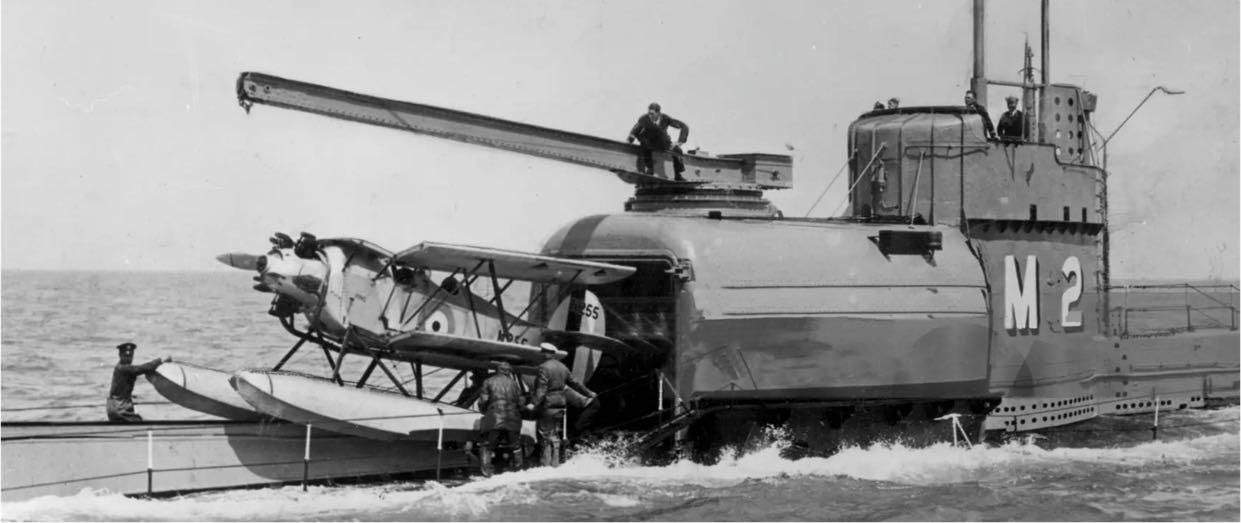
M2 was the first to disappear in November 1925. Her wreck was discovered 75 years later off the coast of Devon. She had been struck a glancing blow by the bow of the Swedish collier SS Vidar, which dislodged the enormous gun from its mounting allowing the submarine to flood. There were no survivors from the 69 souls aboard.
M2, the Seaplane Carrier, was lost with all hands off the coast of Dorset in early 1932. Her final dive was witnessed by the Captain of a passing merchantman who reported she had ‘submerged stern first’. M2 was found eight days later with the hangar door open, suggesting she had initiated a dive before it was properly closed. Another theory was that the aft hydroplanes failed, allowing ingress of water into the hangar.
The loss of her two sister ships was the death-knell for M3, which was scrapped in 1932. A fourth submarine (M4) had been planned but was never built.
Conclusion
It is difficult to imagine how the British ever thought oil-fired boilers would be effective in a submersible, nor the bizarre strategy of using submarines as a part of Grand Fleet manoeuvres. By the start of World War 2 both anomalies were behind them and the submarine service, equipped with U and T class boats, became an effective and indispensable arm of the Service. But the lessons learned had been hard indeed. ✈


Top. HMS M2 carried a hangar integral with the conning tower, into which a Parnall Peto seaplane could fit. It was launched from the upper casing using a hydraulic catapult and recovered using a crane. She served in the role for nearly five years before being lost with all hands in February 1932. Inset: A piece of wood bearing the message “Help. M2 gone down. No.2 hatch open” was found washed ashore three weeks later. Lower: The wreck of M2 is a popular dive site today, despite being a grave for the 60 men aboard. ✈

Shirt $10.00 (also children’s size (large only) $5.00.




Ladies Polo Top clearance $5.00




Association Tie $25.00.



For clothing items please contact Jock Caldwell via email on flynavy@shoal.net.au, or phone/text to 0411 755 397. Let him know your request and address details and he will get back to you with pricing and payment details. Payment can be either EFT, direct deposit or cheque. Expect postage of $10-15 per order.✈

The Skyhawk Years is a story of the RAN’s iconic “Scooter” A4s from when we first acquired them, to their demise at the hands of the Hawke government. With first-hand stories from pilots and maintainers, the challenges of operations from the world's smallest aircraft carrier are well explained. Also told are thrilling stories of air combat manoeuvres against fighters from other countries, with the A-4 often surprising more wellcredentialed adversaries. Buy it here. ✈
This meticulous and beautifully written book on the life of Admiral Sir Victor "VAT" Smith RAN is a fitting tribute to his extraordinary life. VAT was just 13 when he joined the Royal Australian Navy in 1927, where he specialised in aviation. He rose to the rank of CDF and was our first four-star aviator. Buy it here ✈




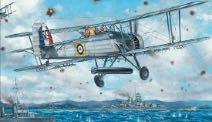
The history of HMAS Melbourne is about to be published. This 202page book from the Naval Historical Society of Australia will be in soft cover, A4 landscape format. It includes more than 400 photographs and other illustrations. Expect to read stories of her deployments and missions, her aircraft and equipment, and the crews who operated this versatile naval asset. It describes the origin of the light fleet carrier, the changes made for her entry into service, and the updates given to the vessel over her life. You can pre-order your copy here ✈


Payment amount varies according to which Division you are in - please see details below. You can pay by Electronic Fund Transfer (EFT); by direct deposit at your local bank, or by cheque (to some Divisions only). Sorry, we don’t do credit cards. If you need any advice, please contact the webmaster here